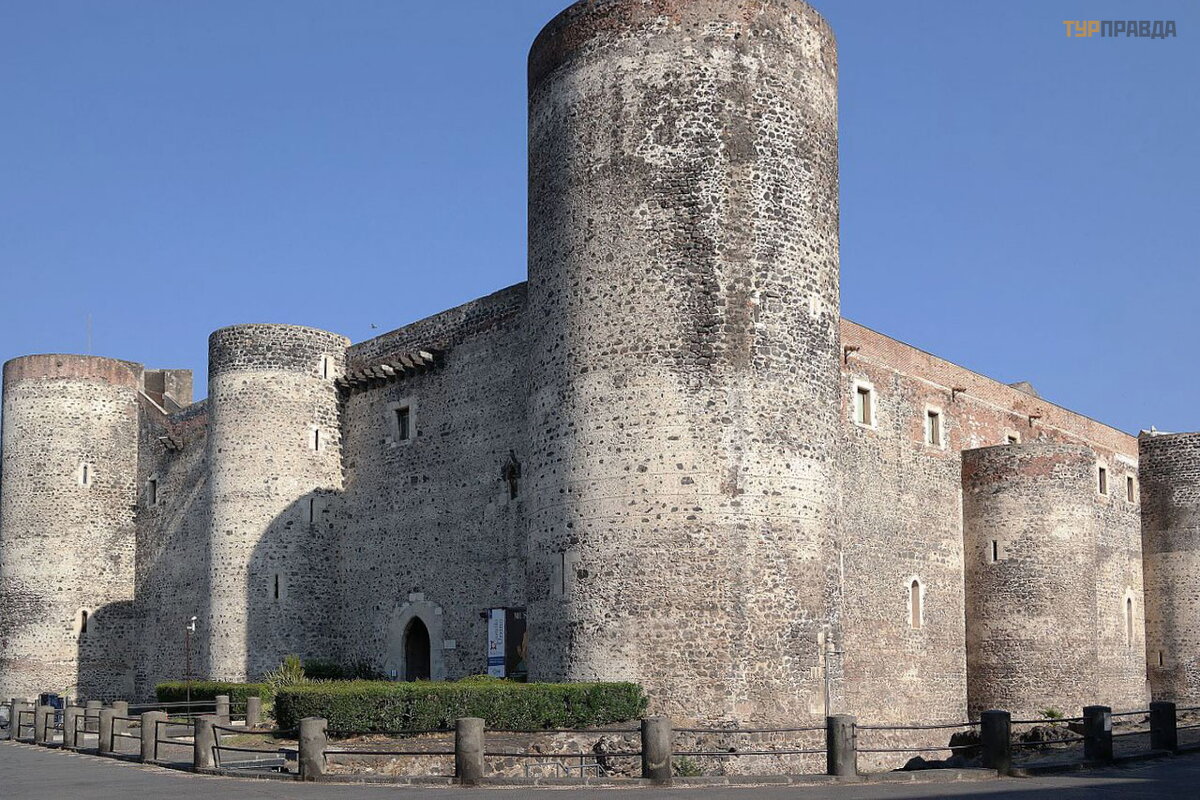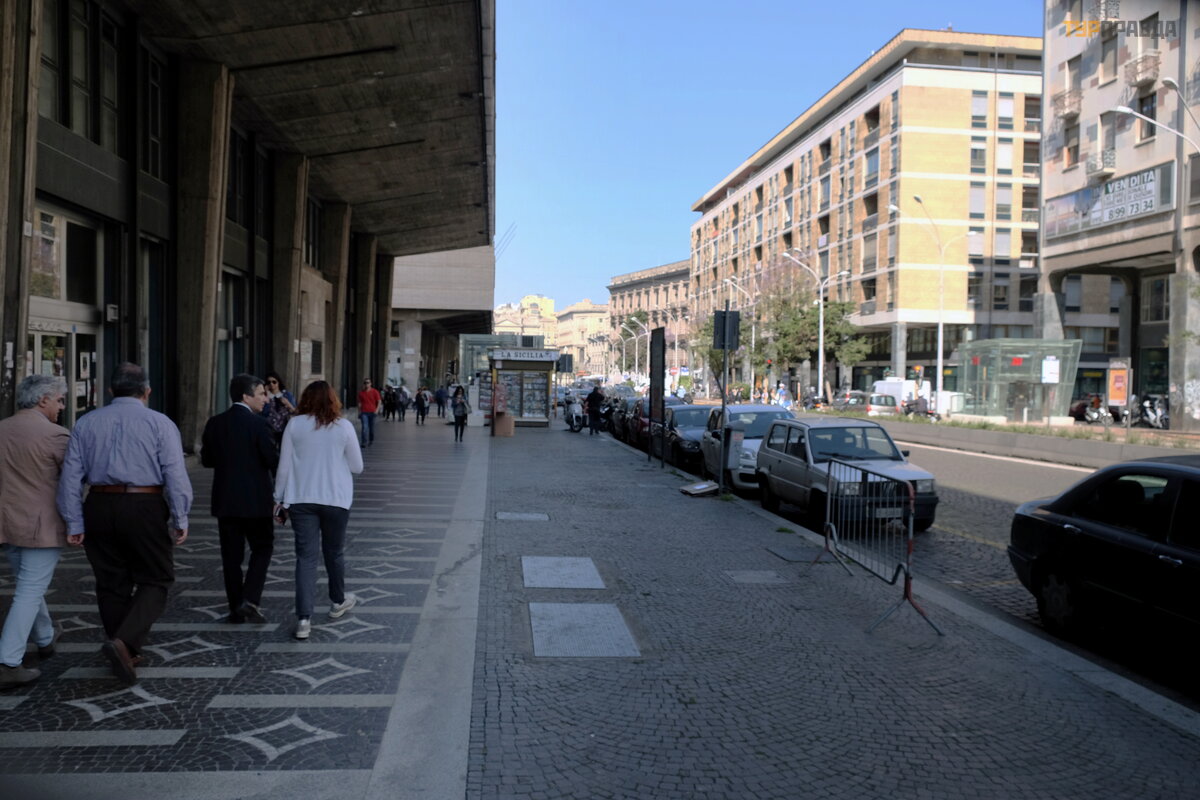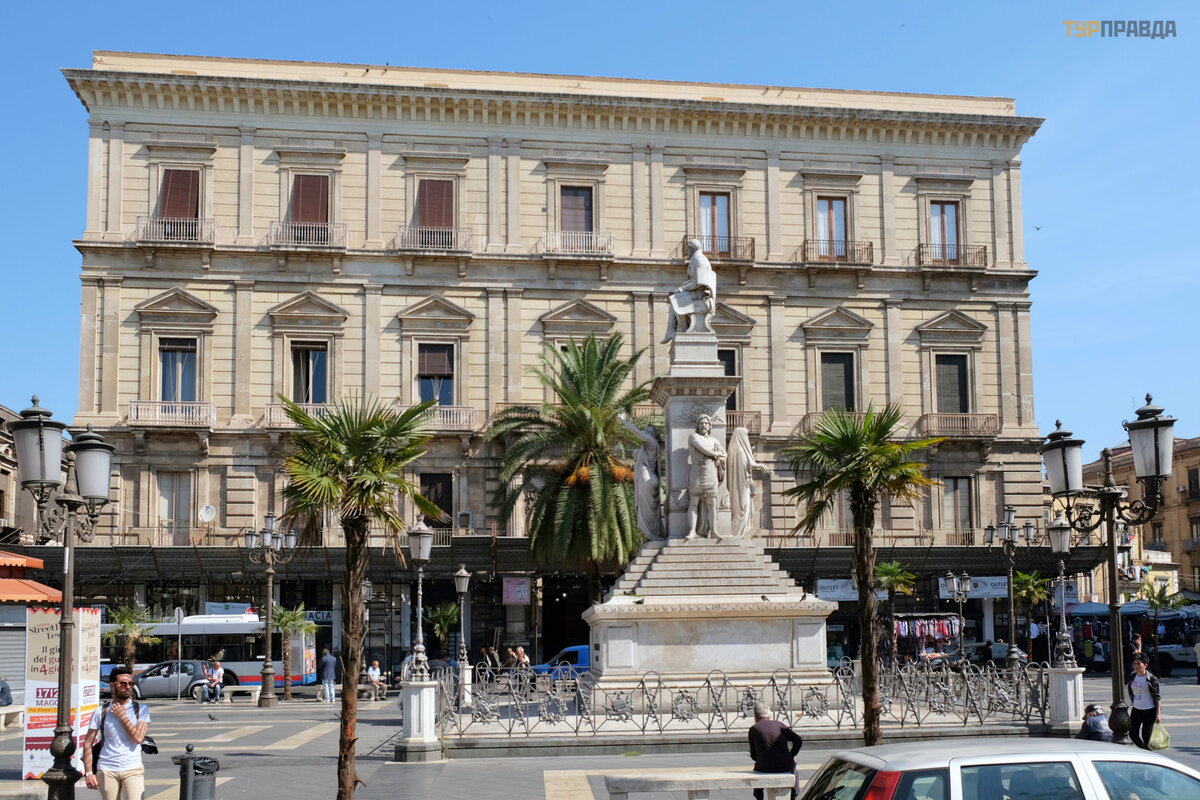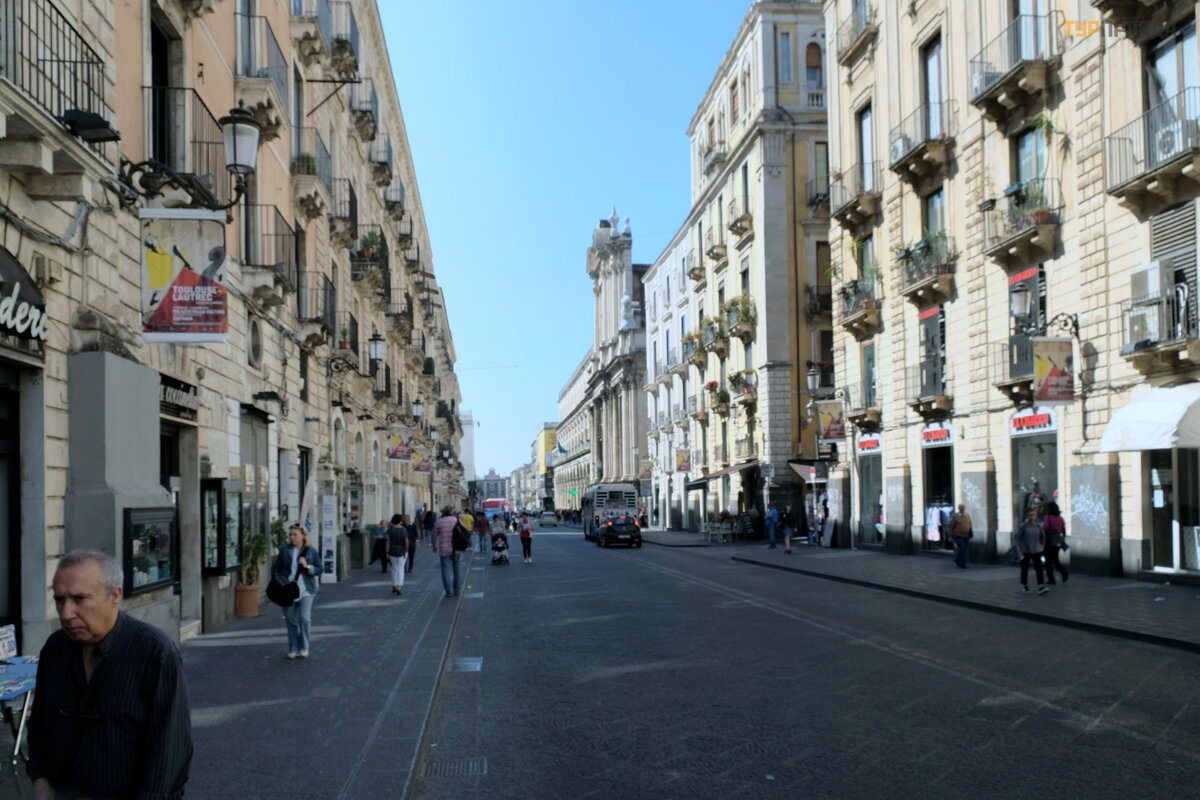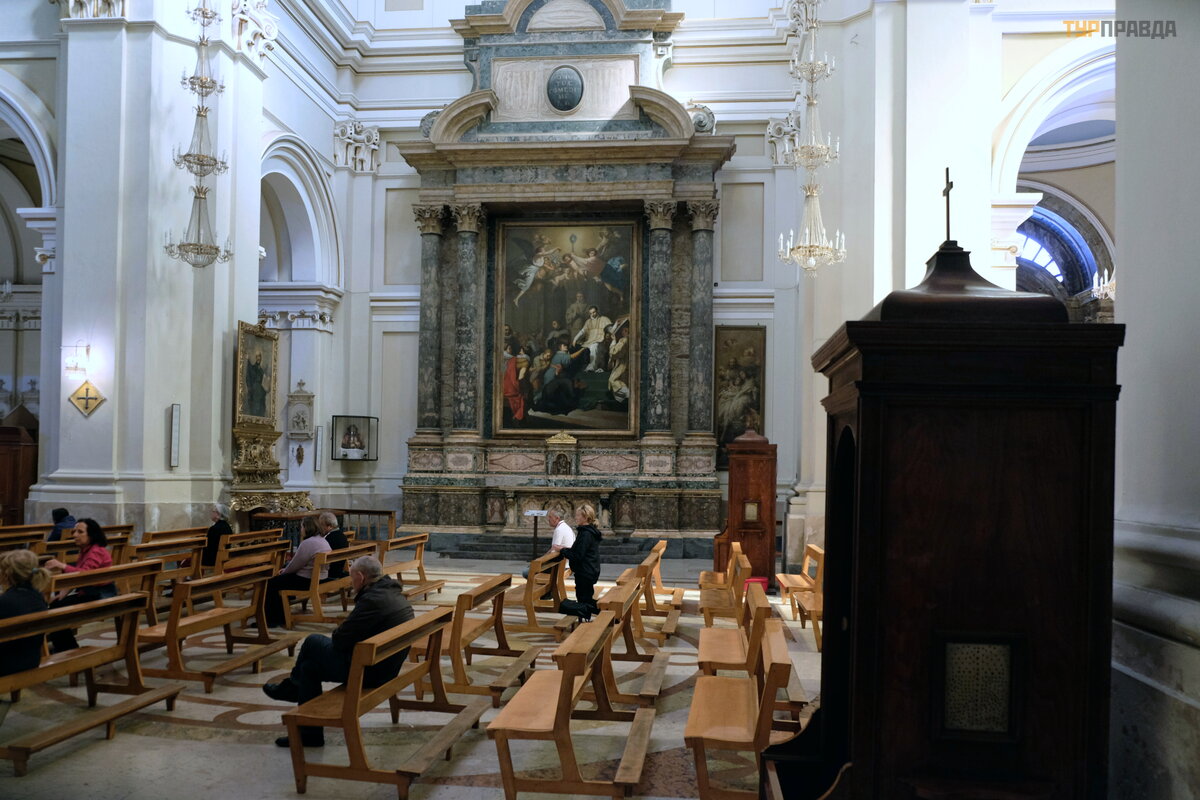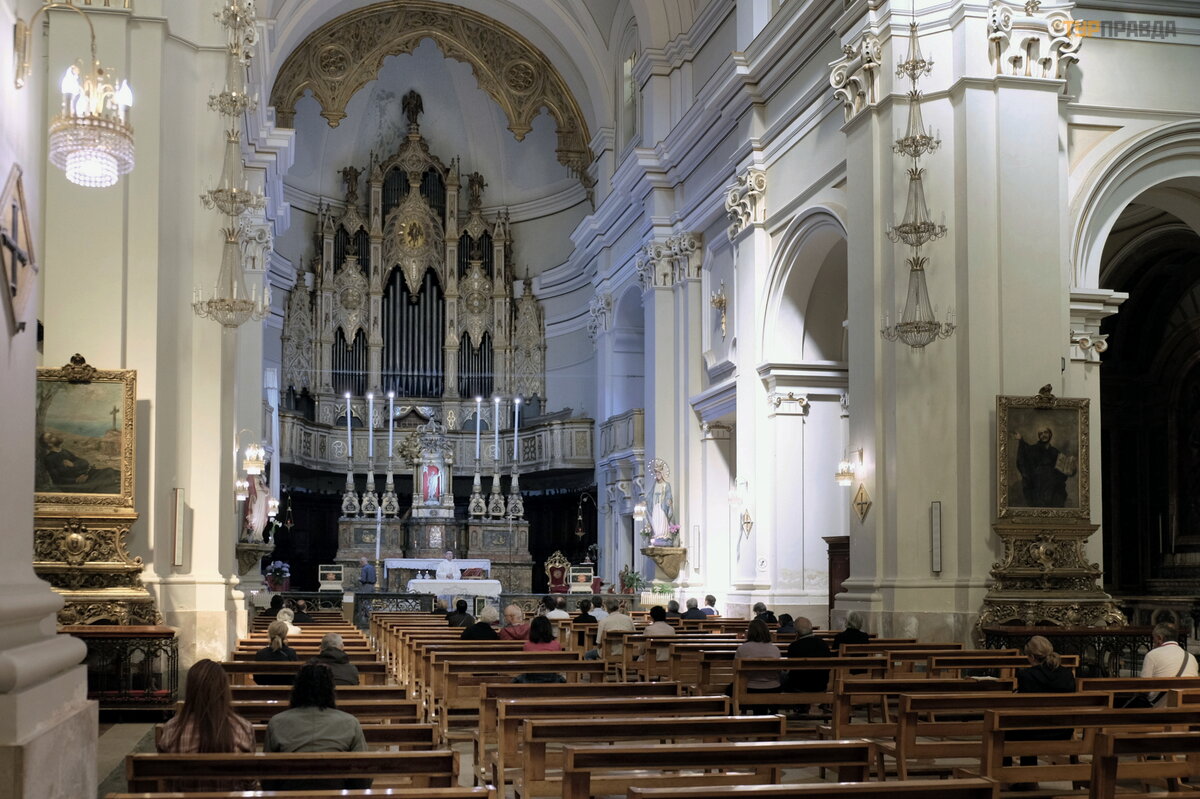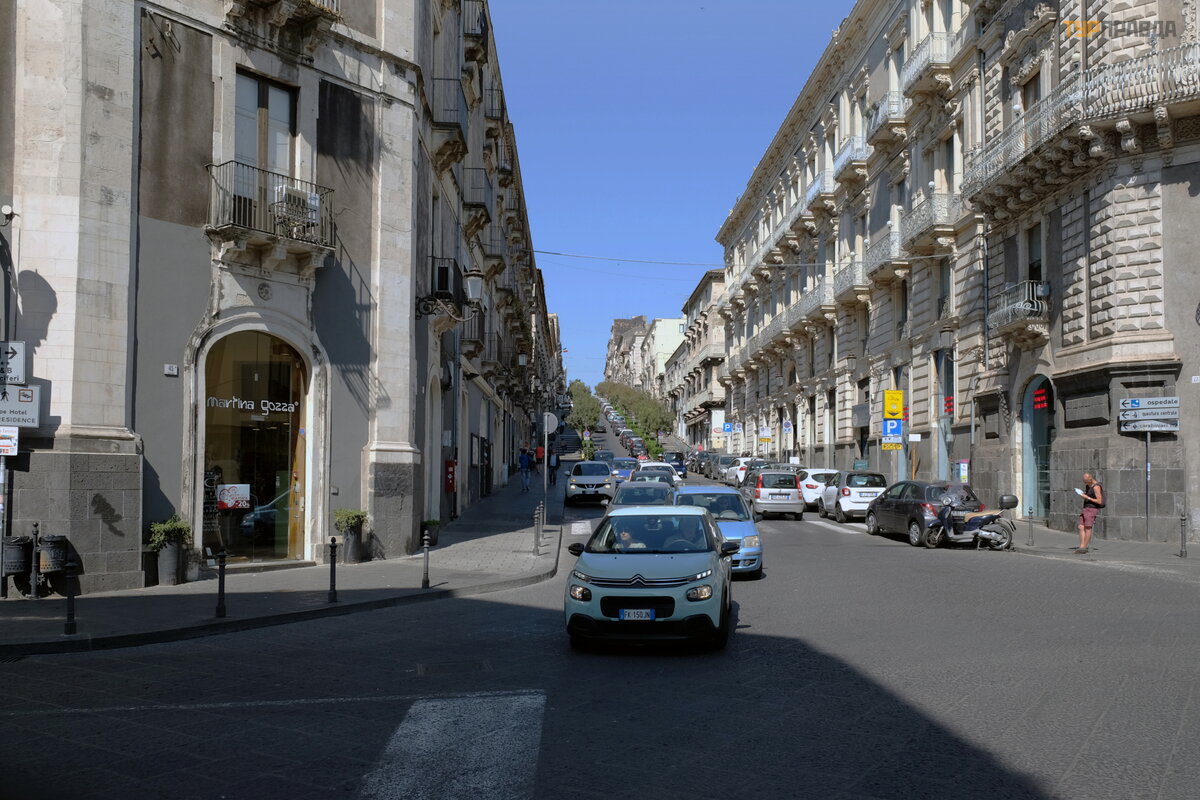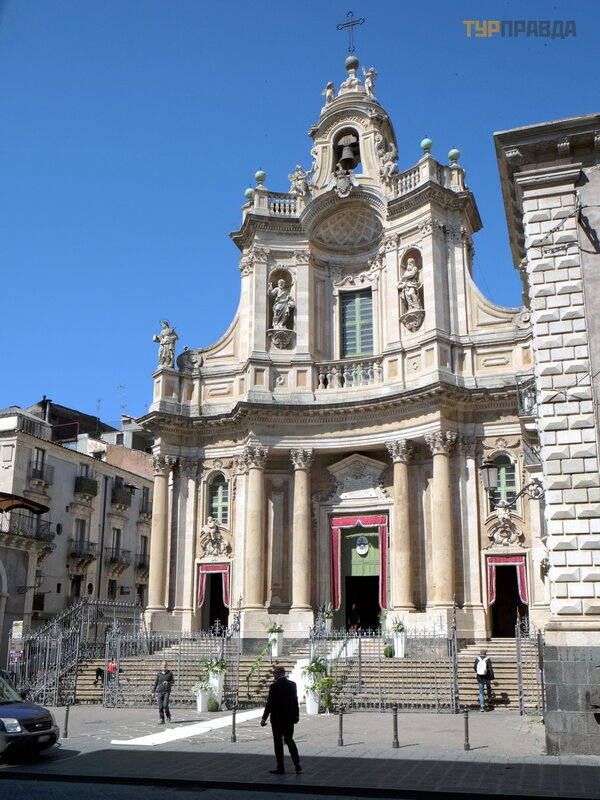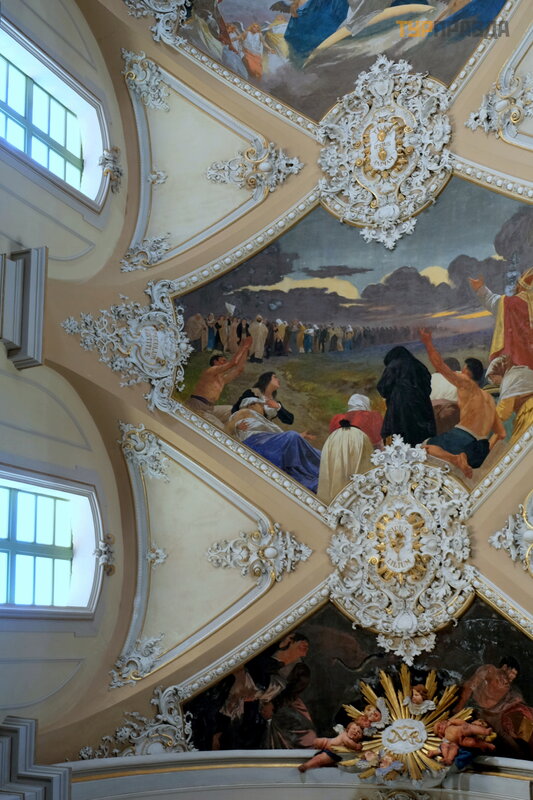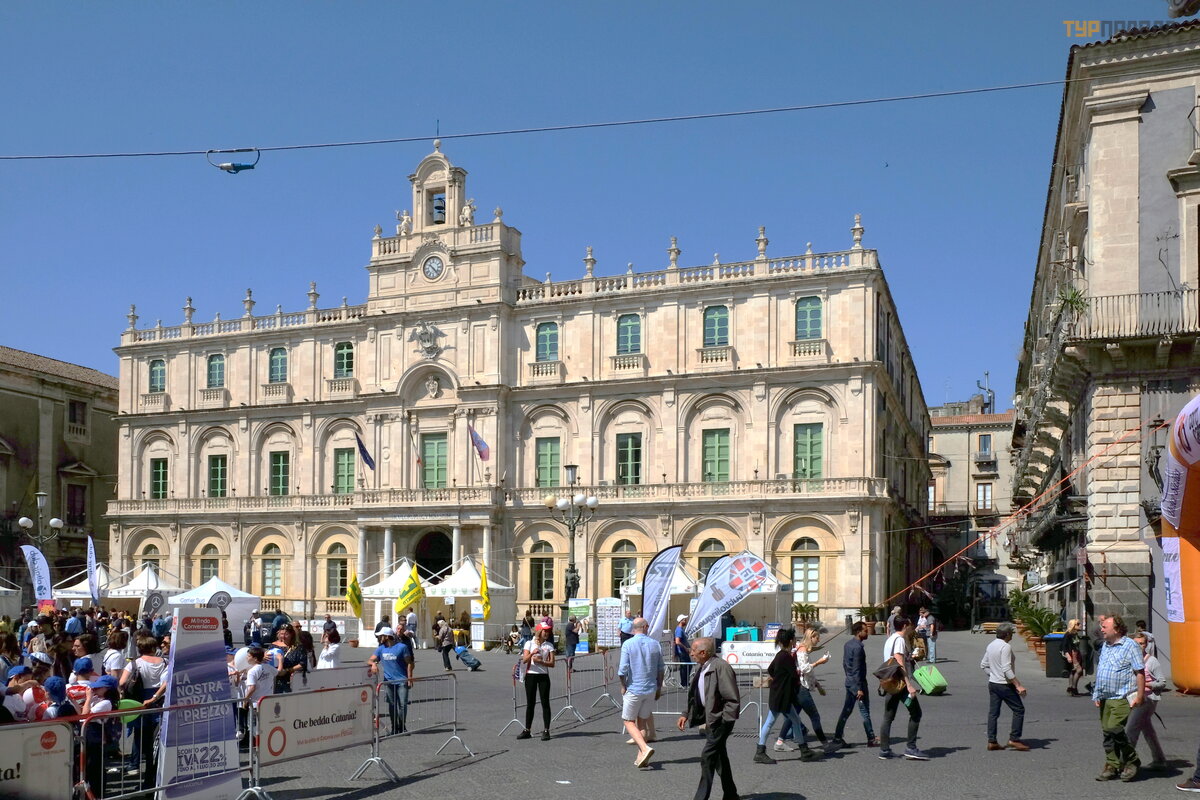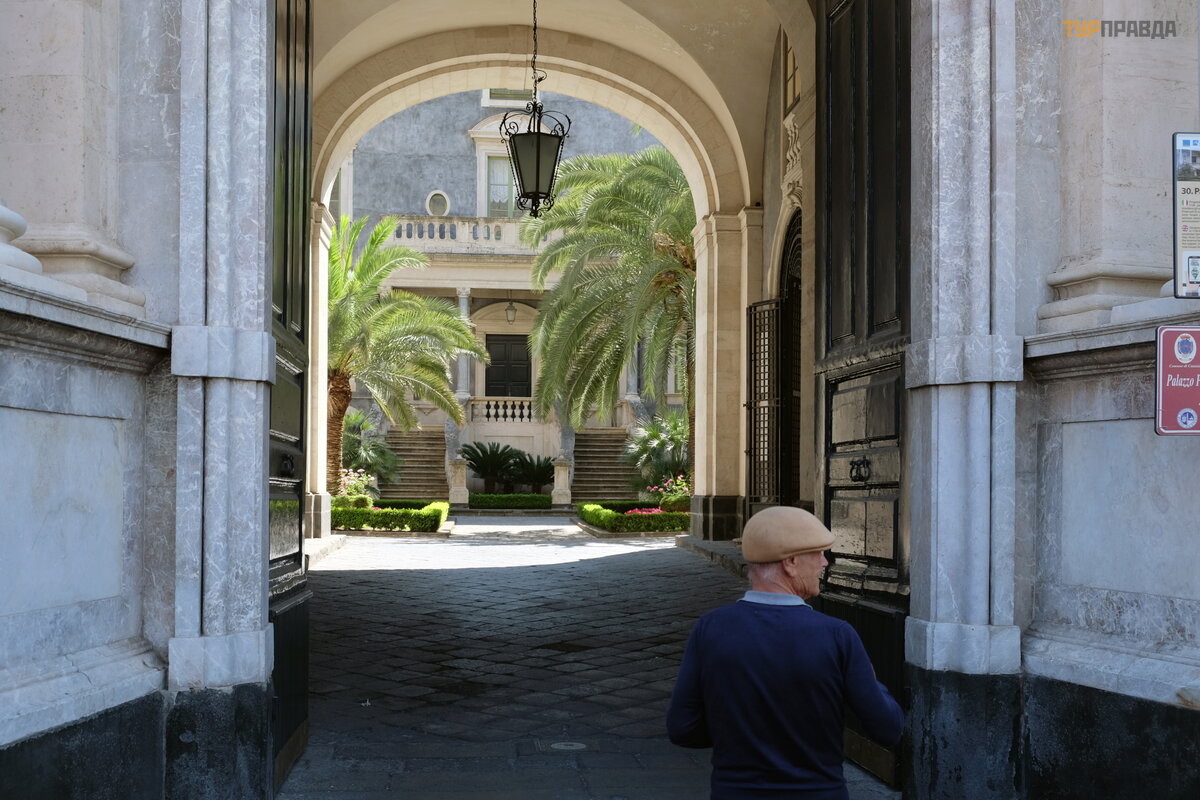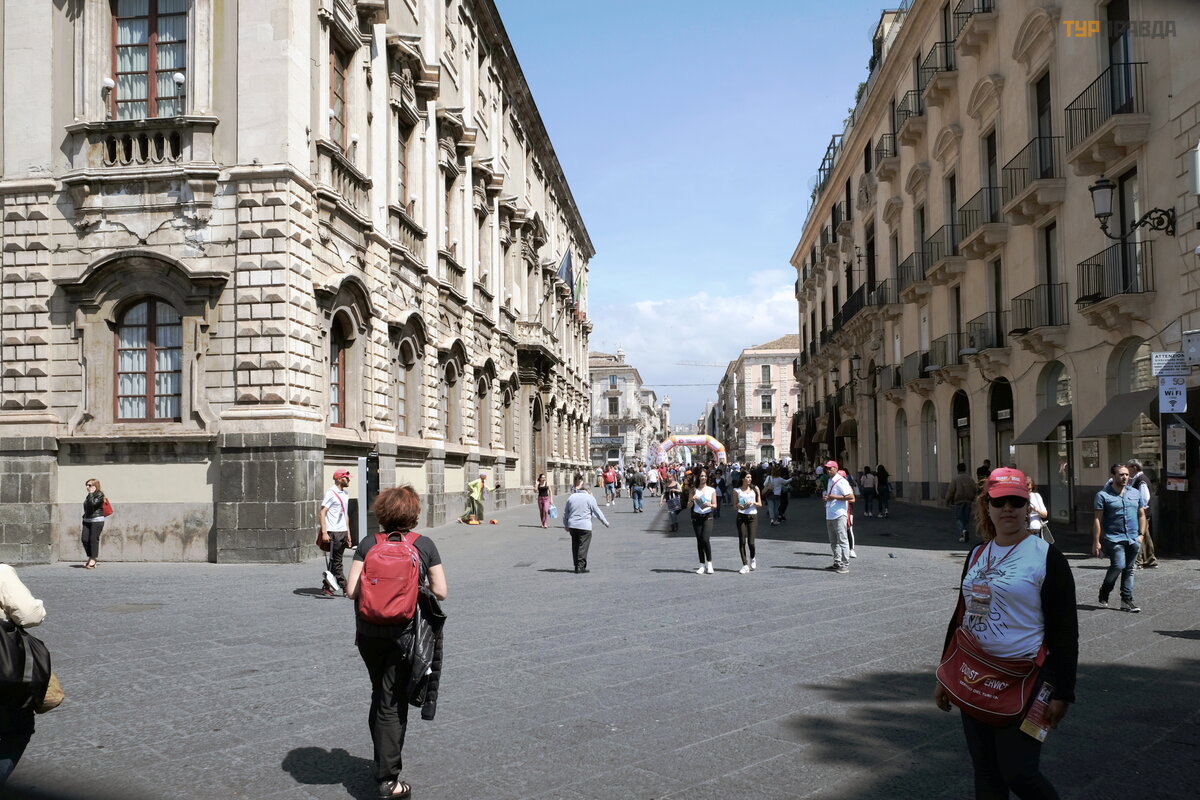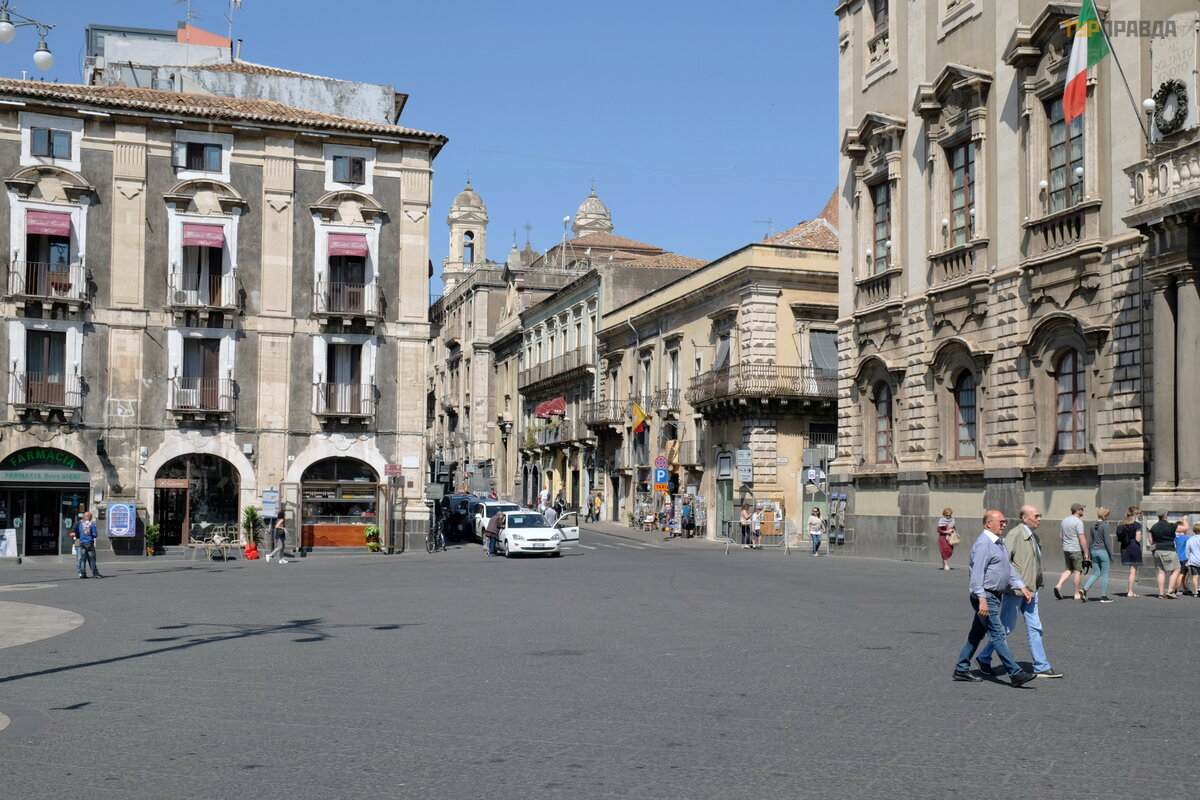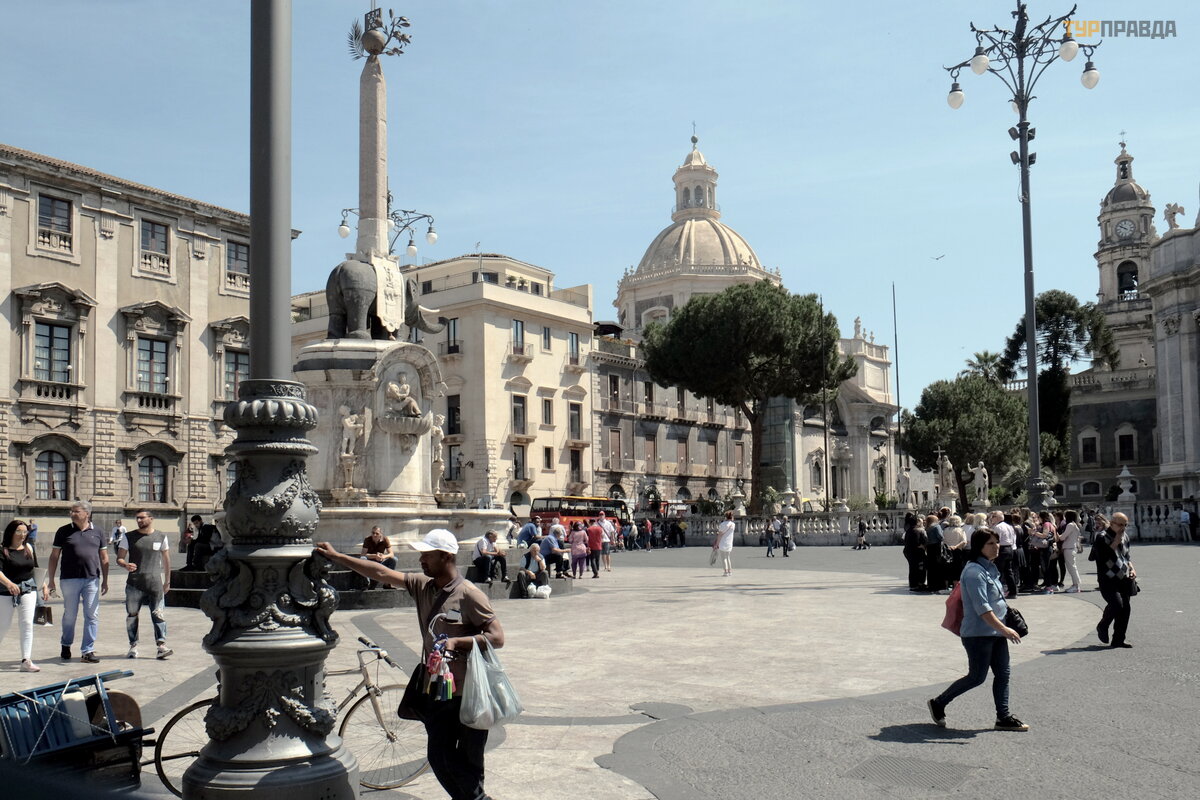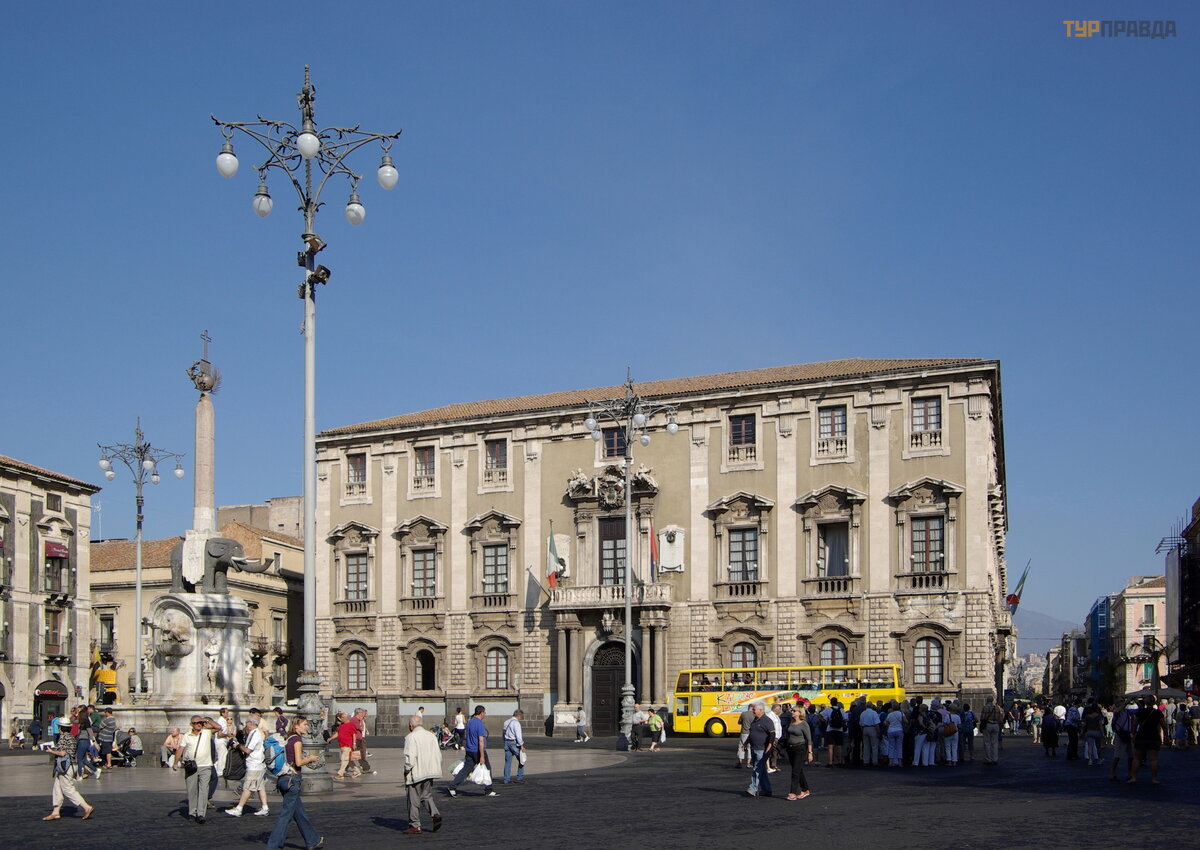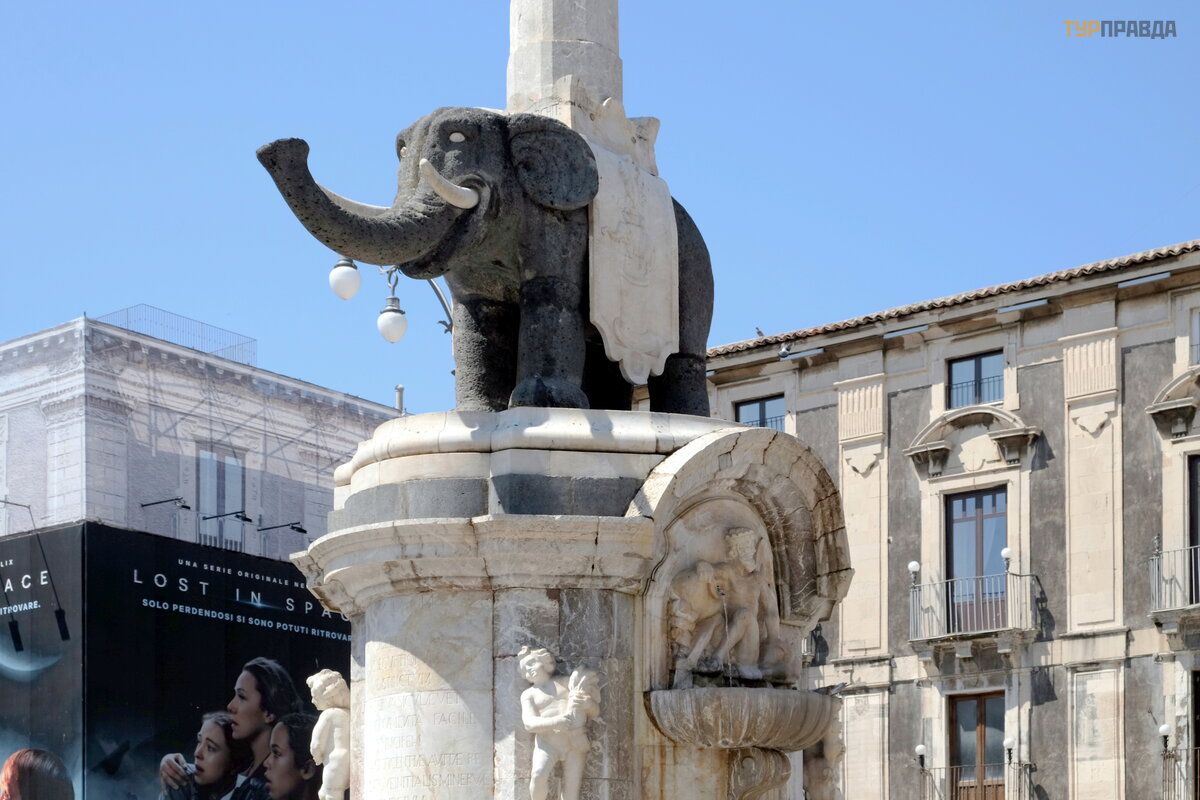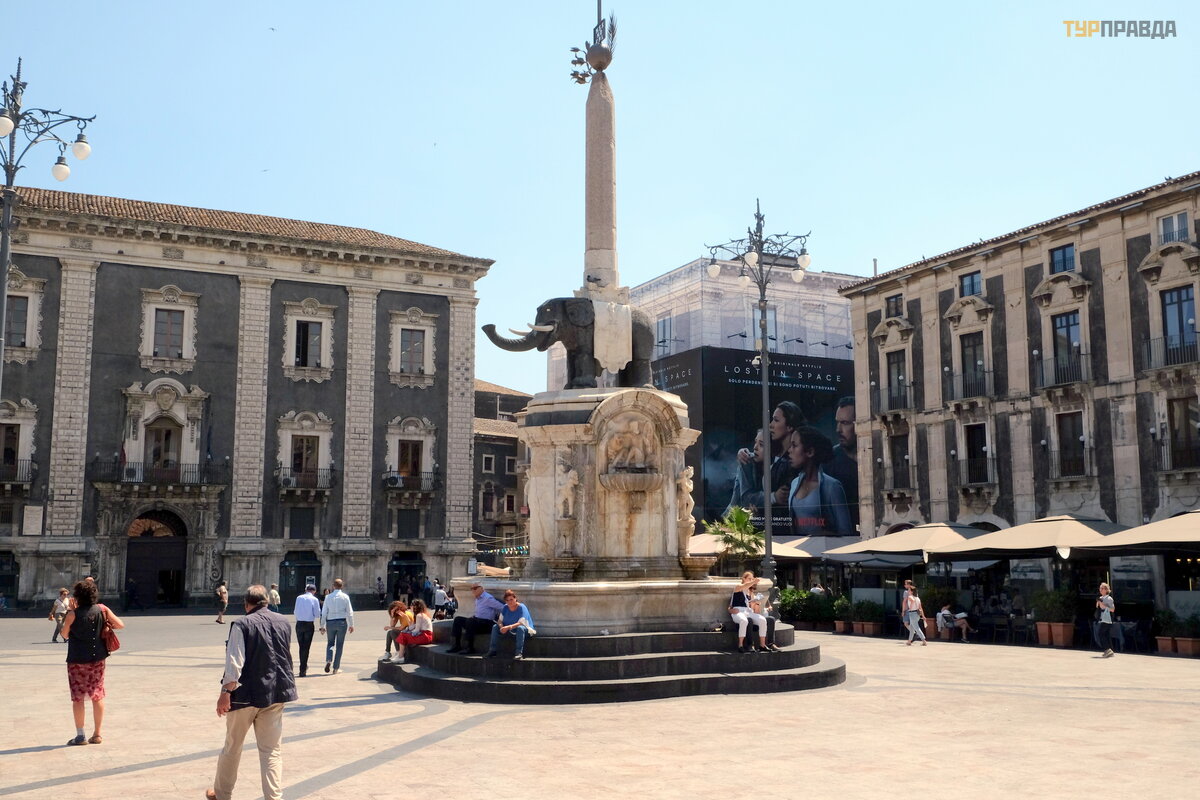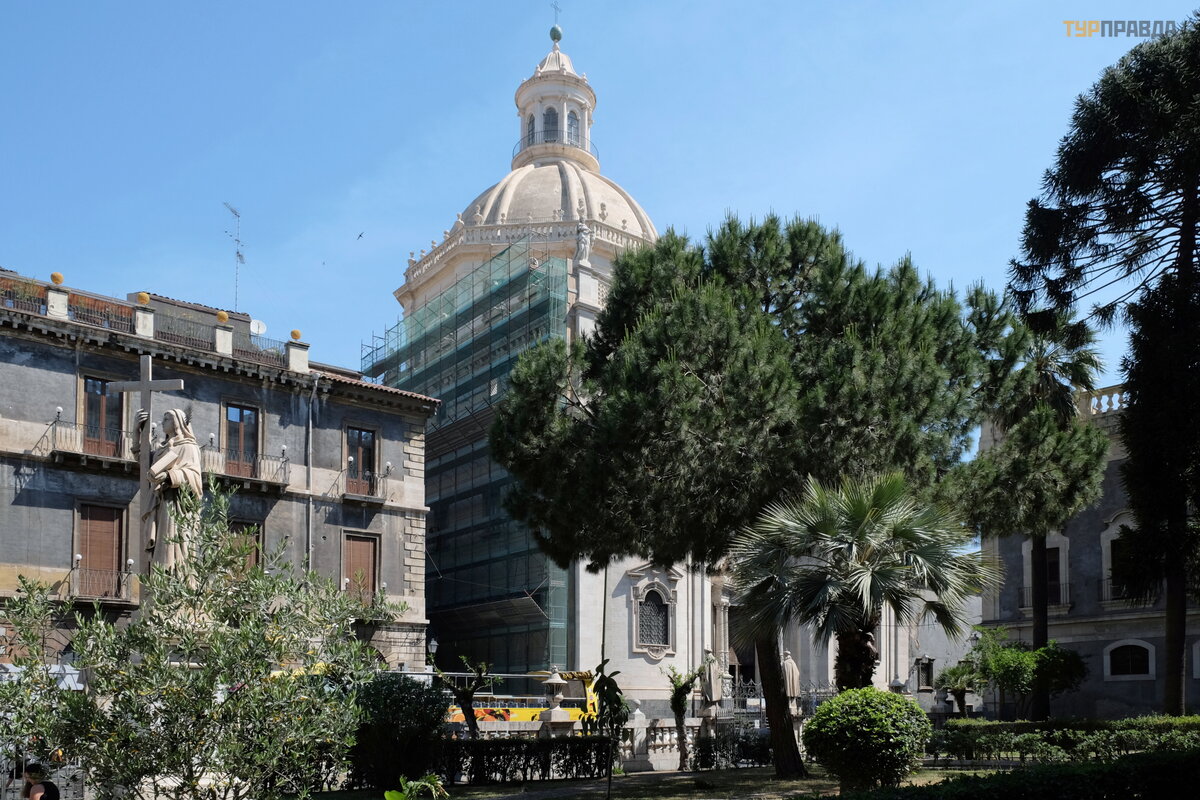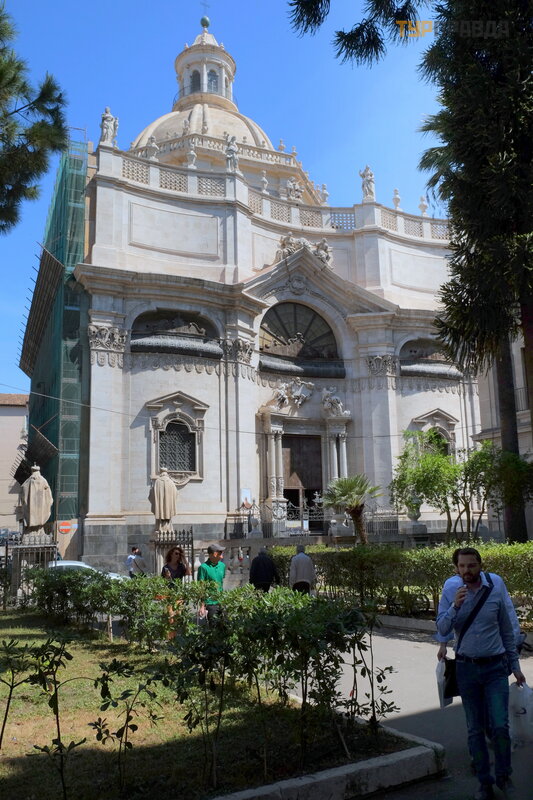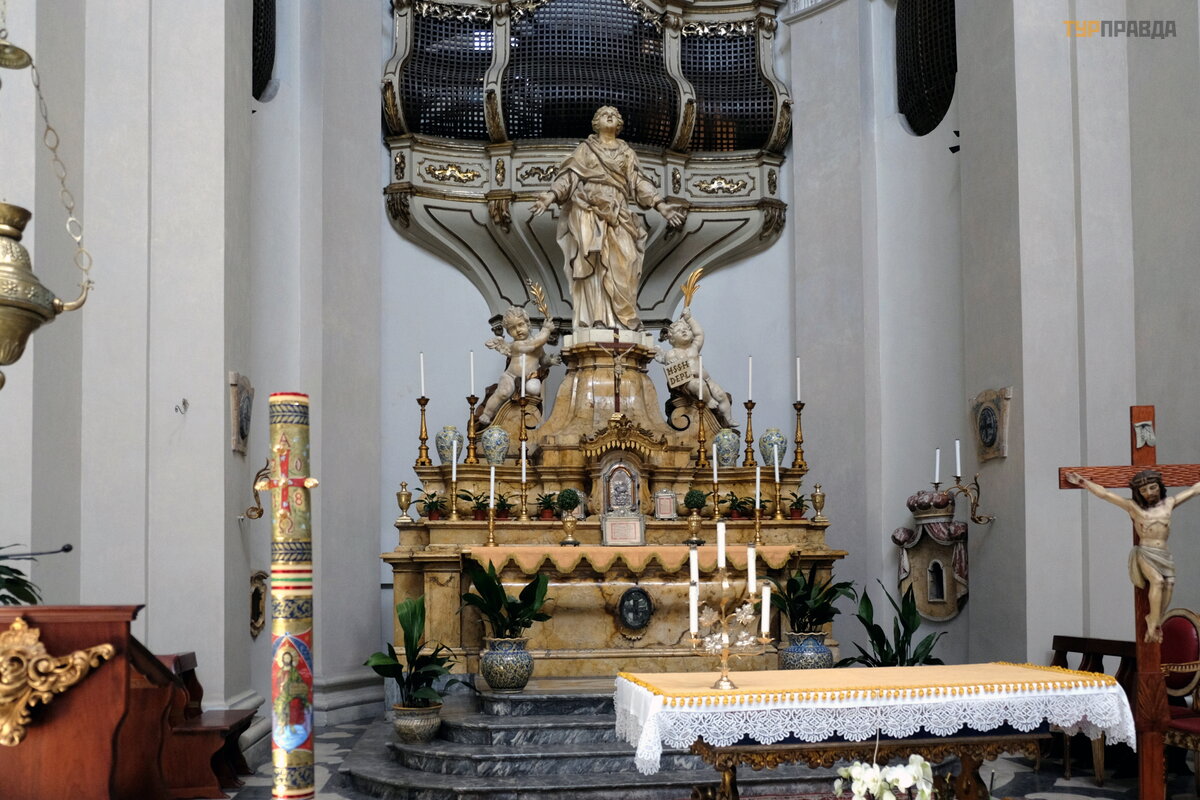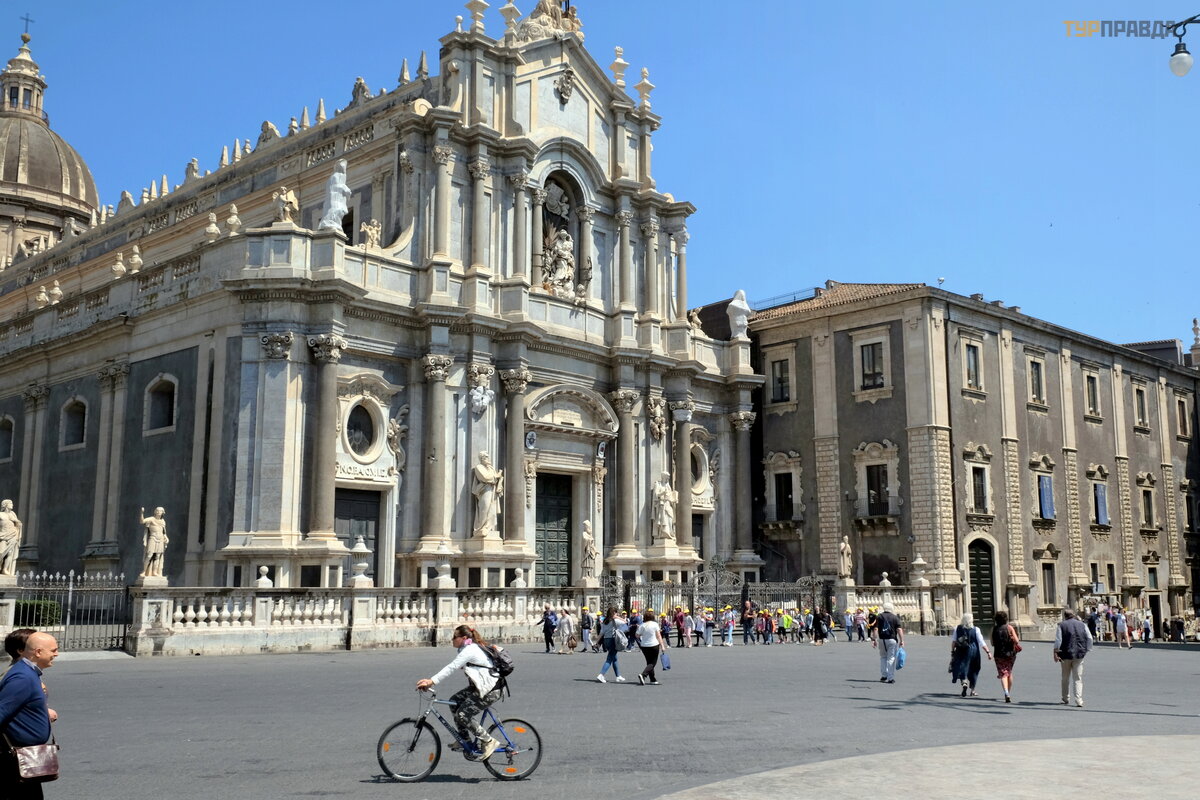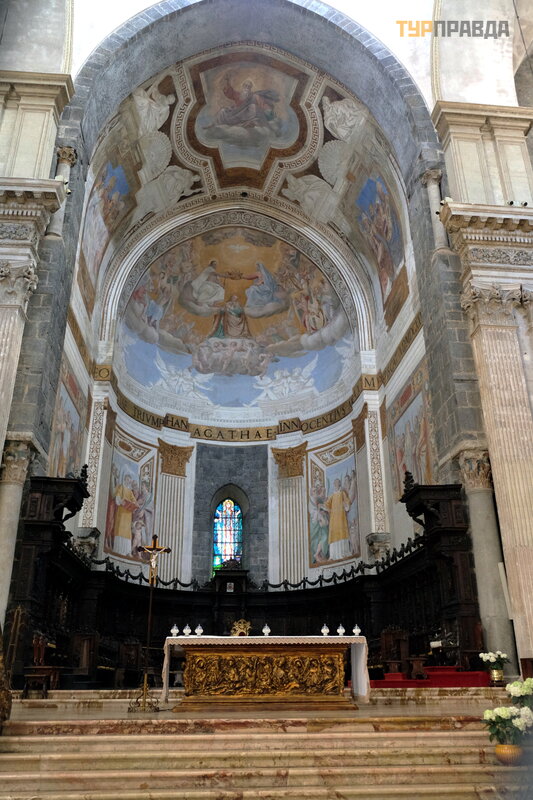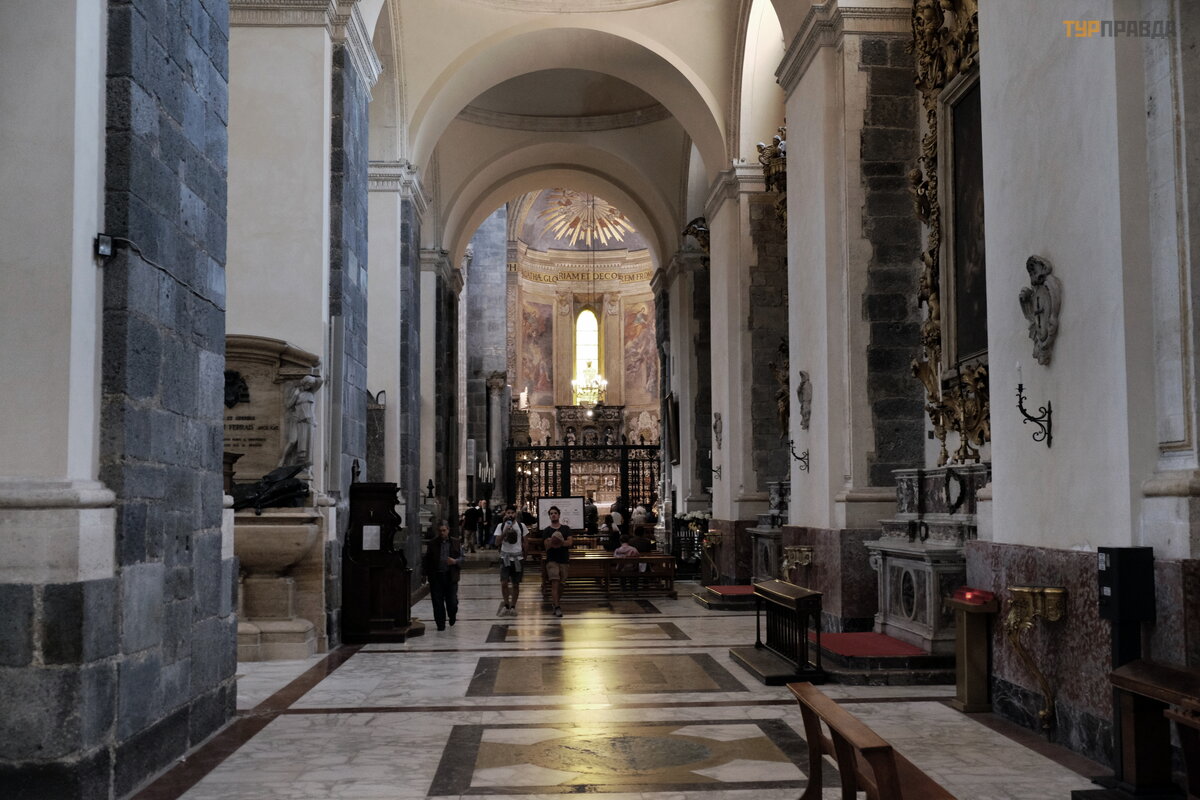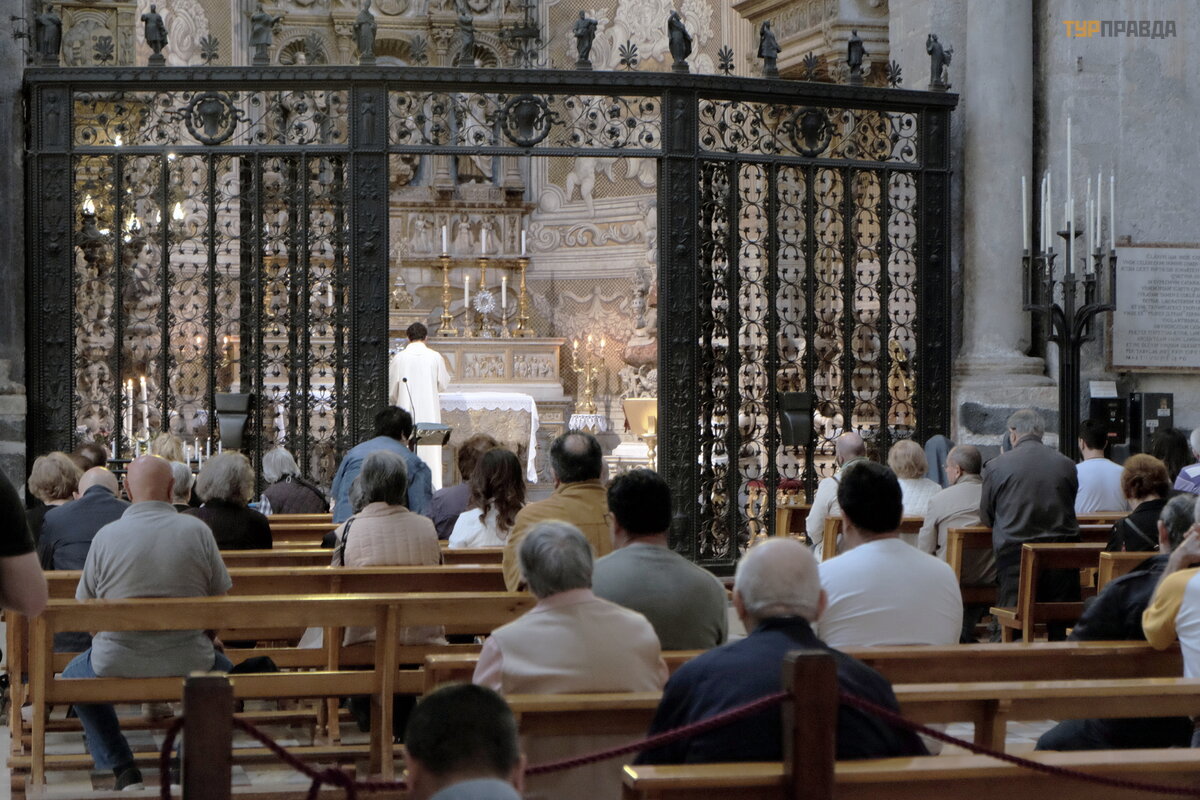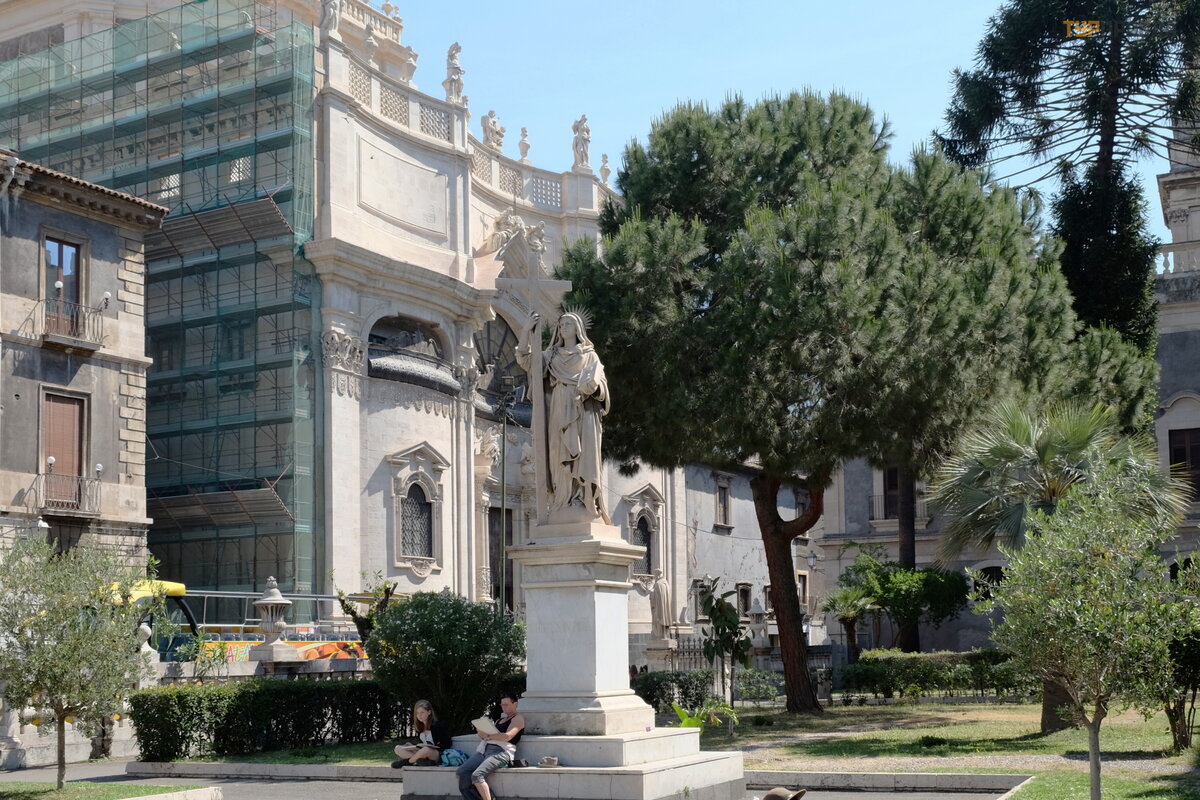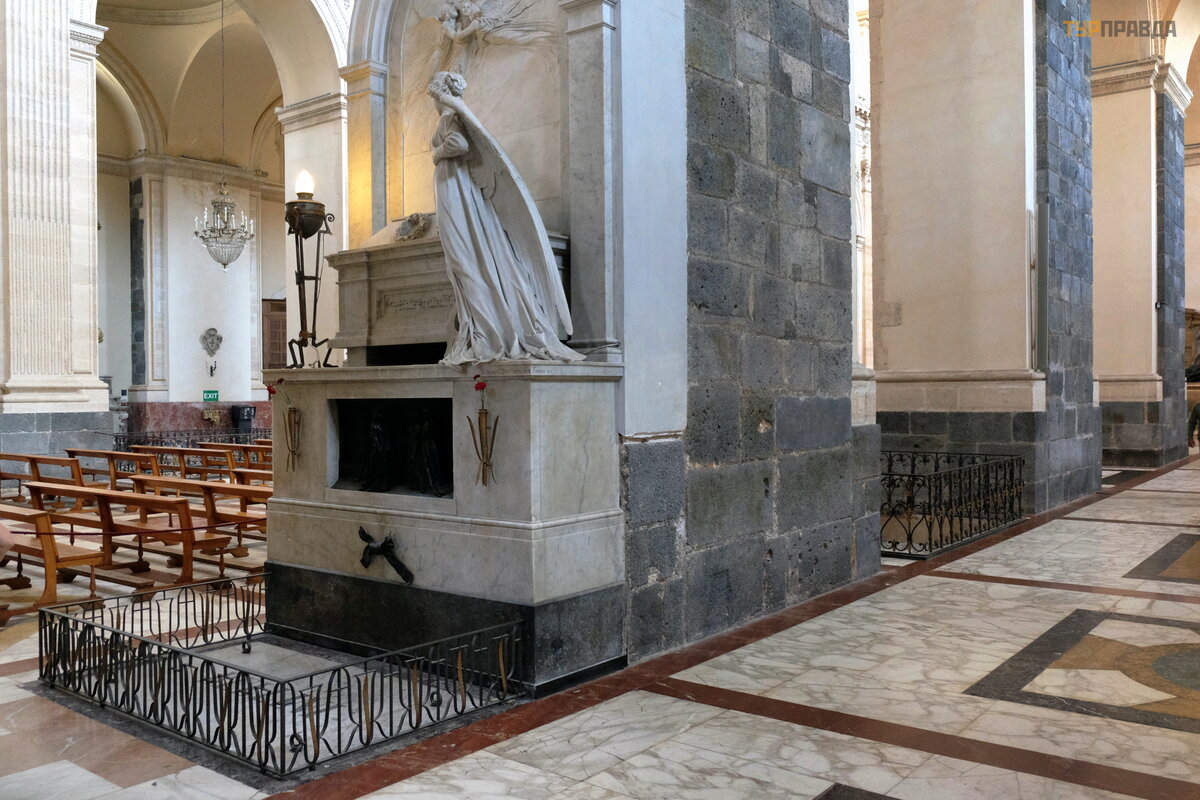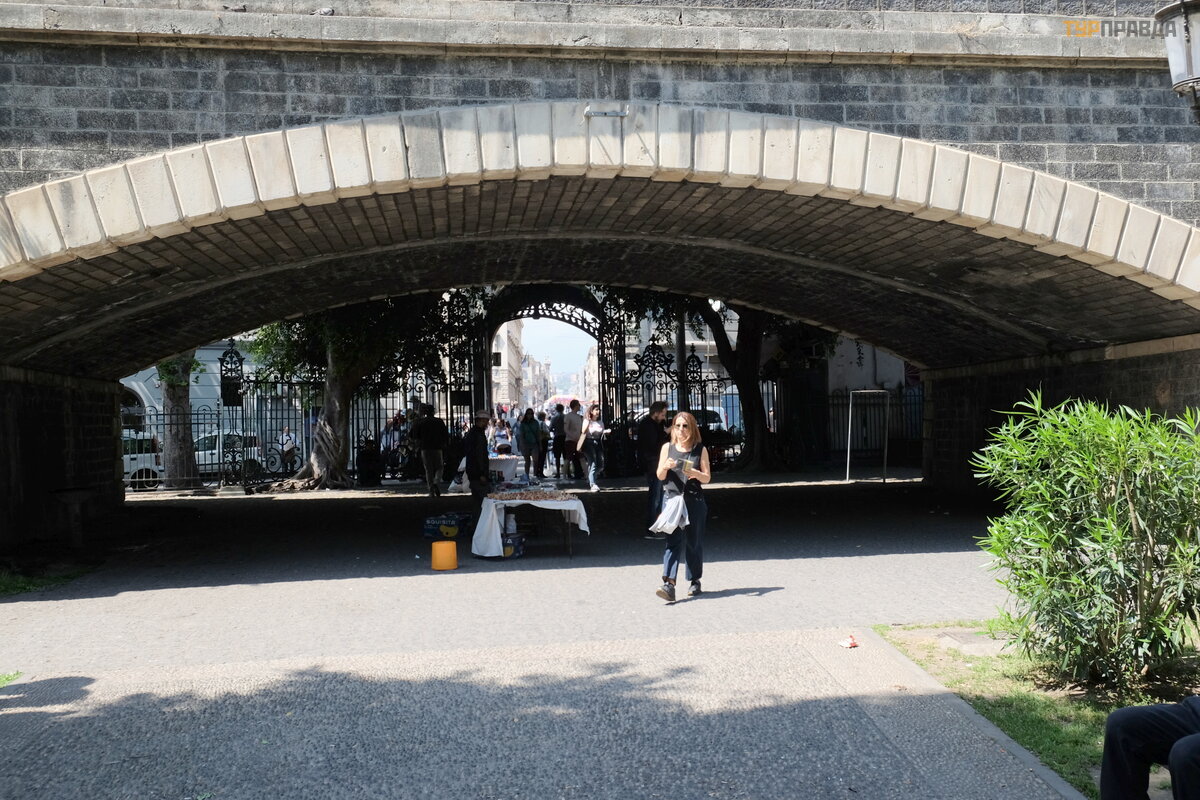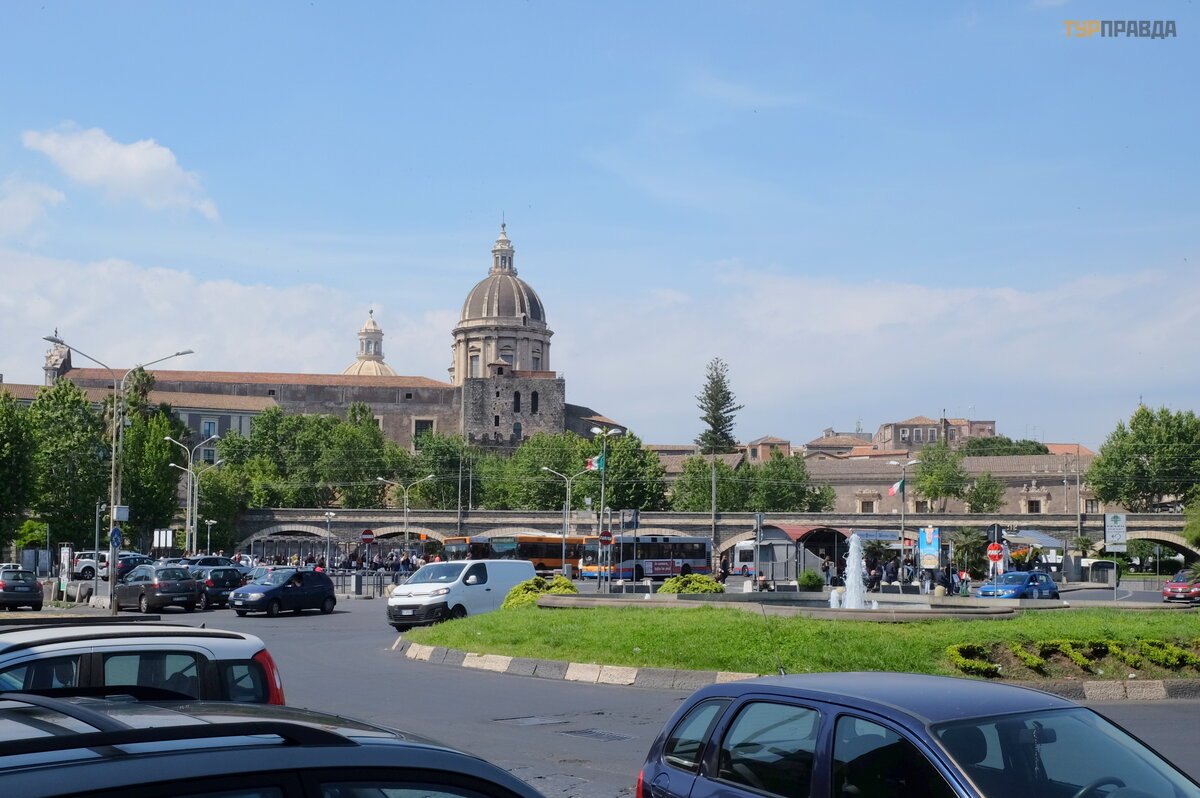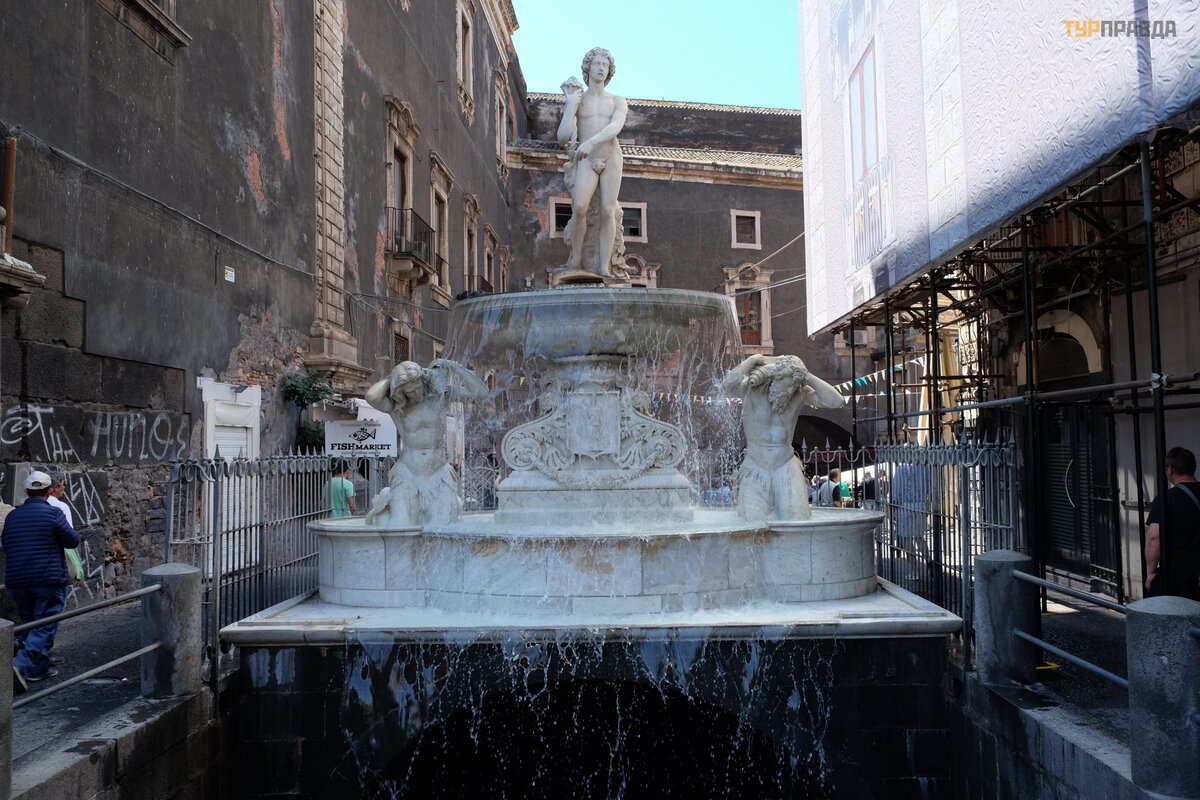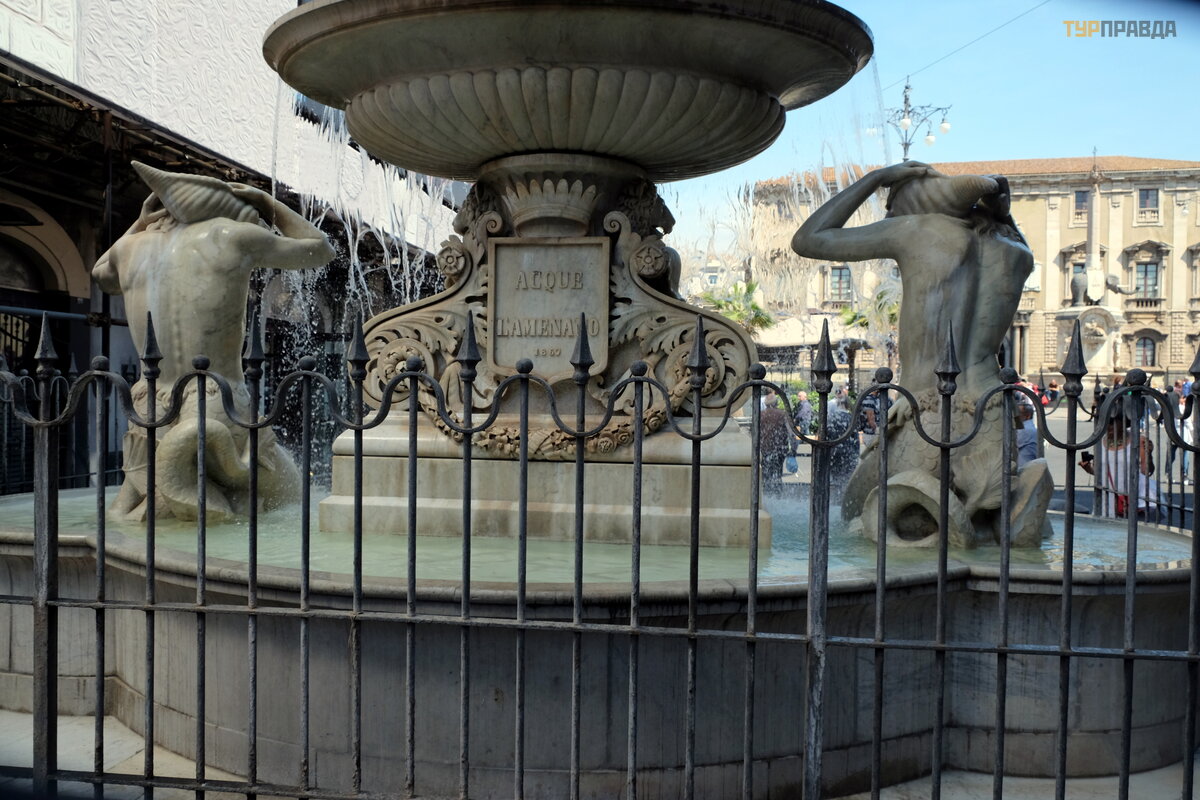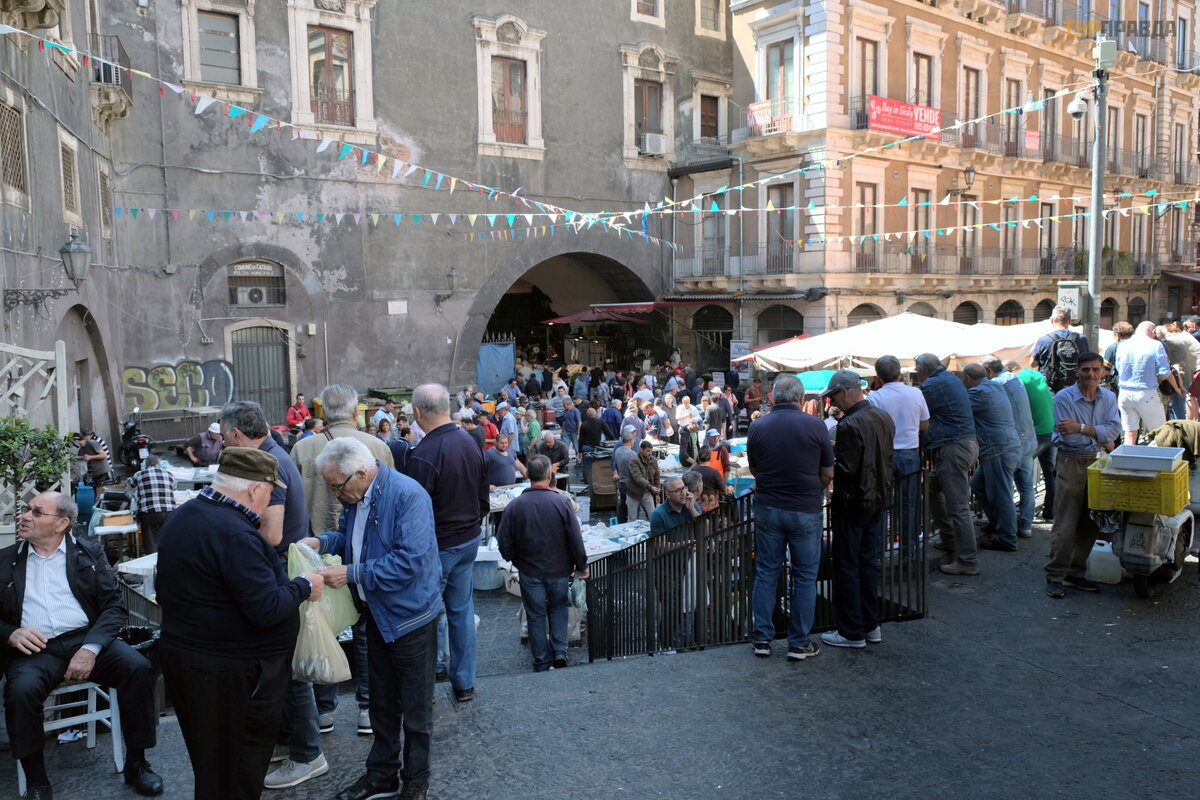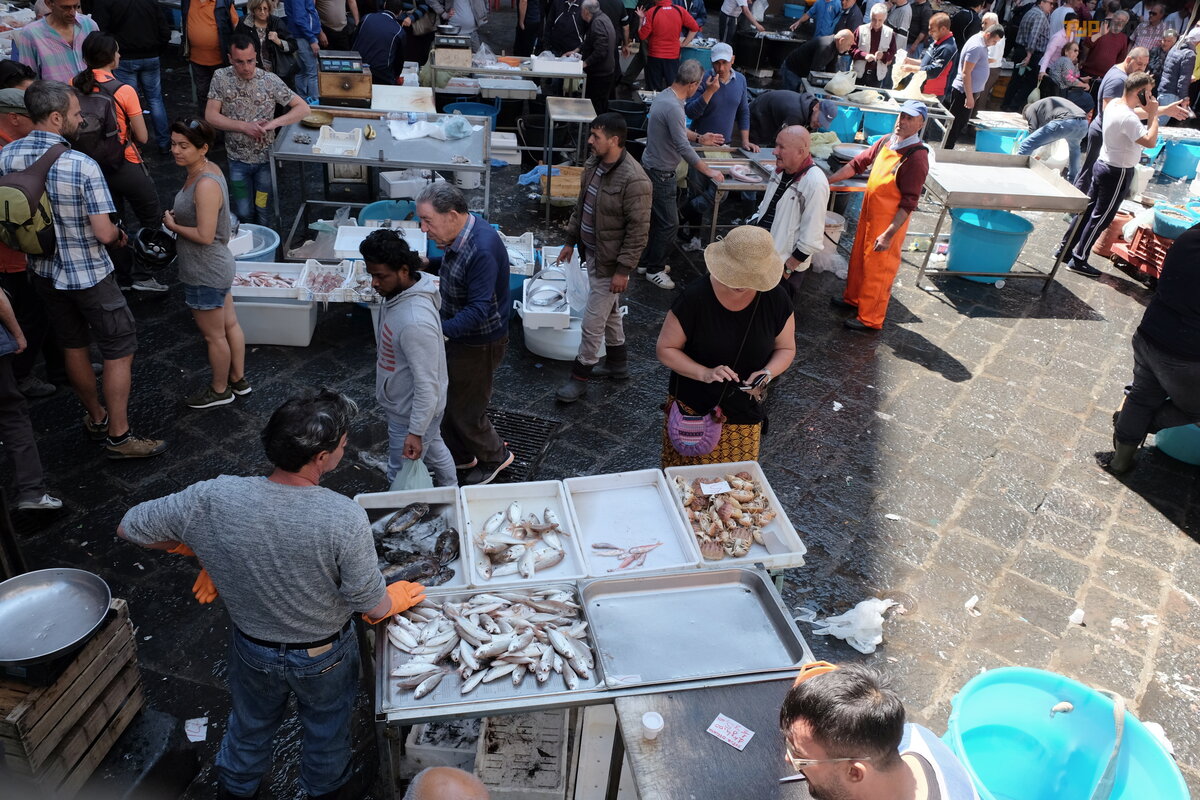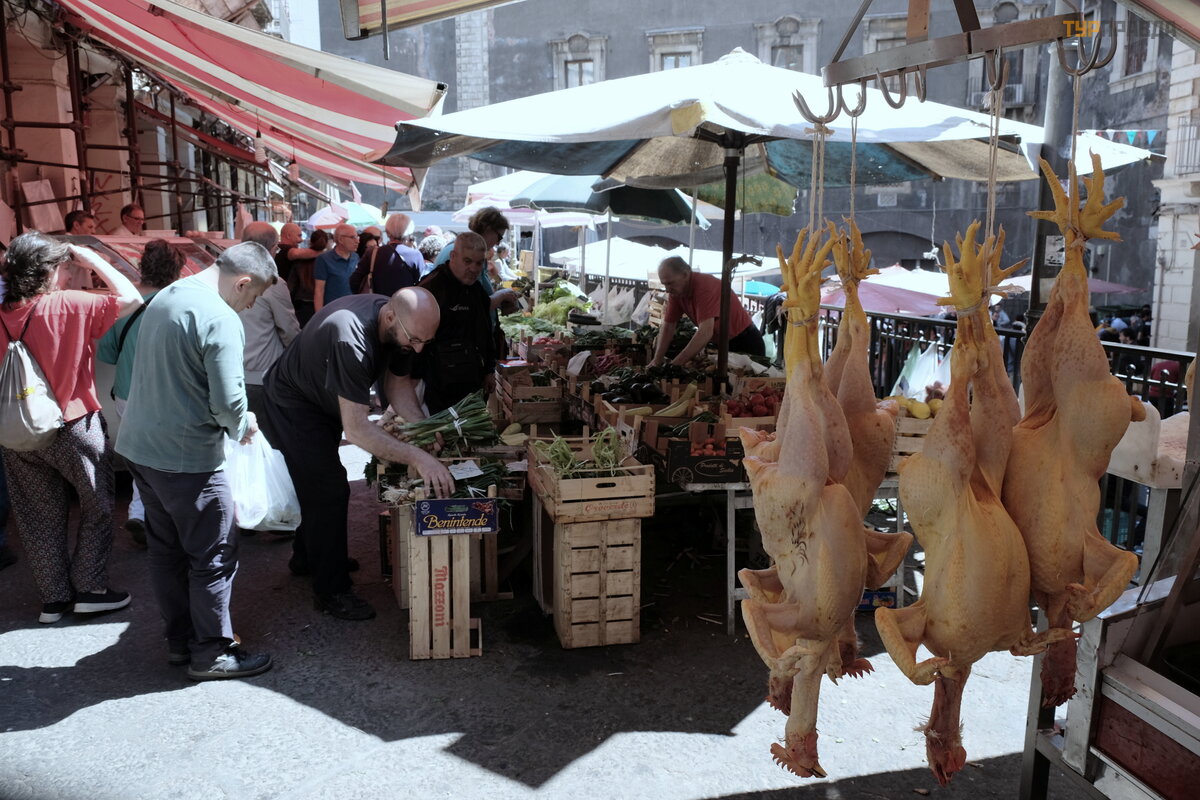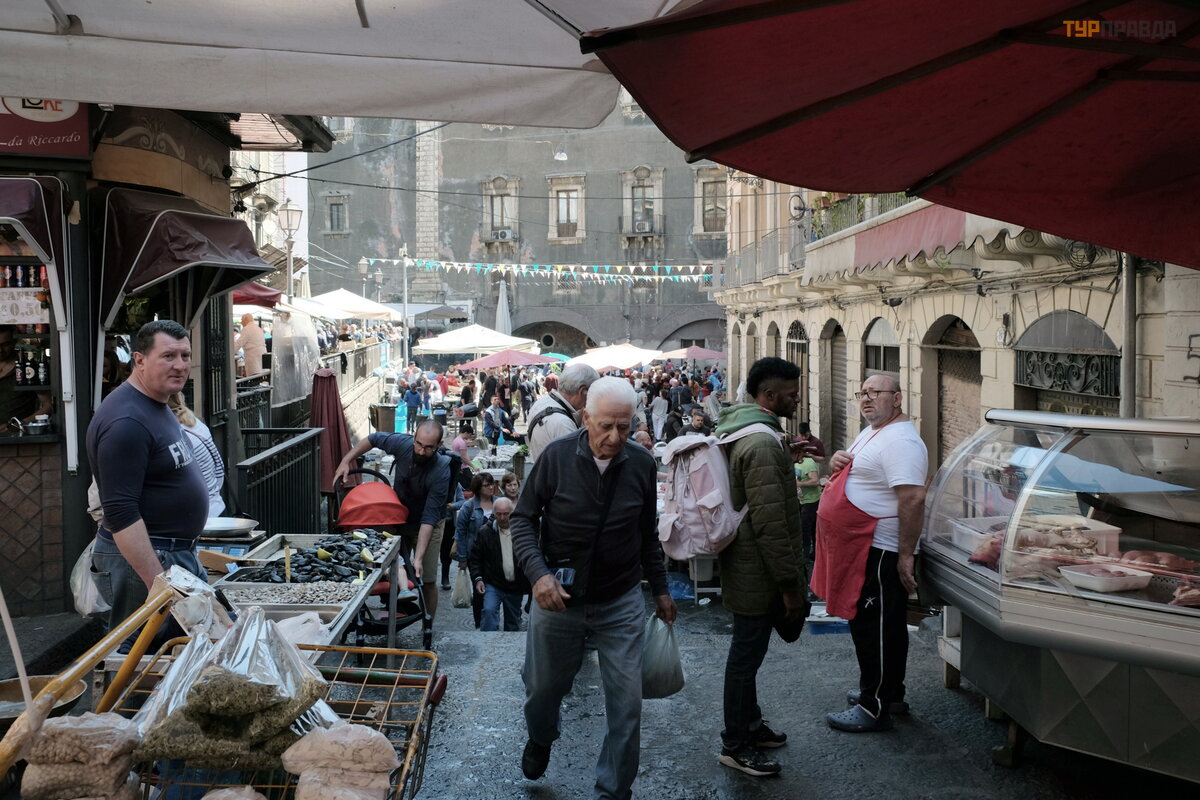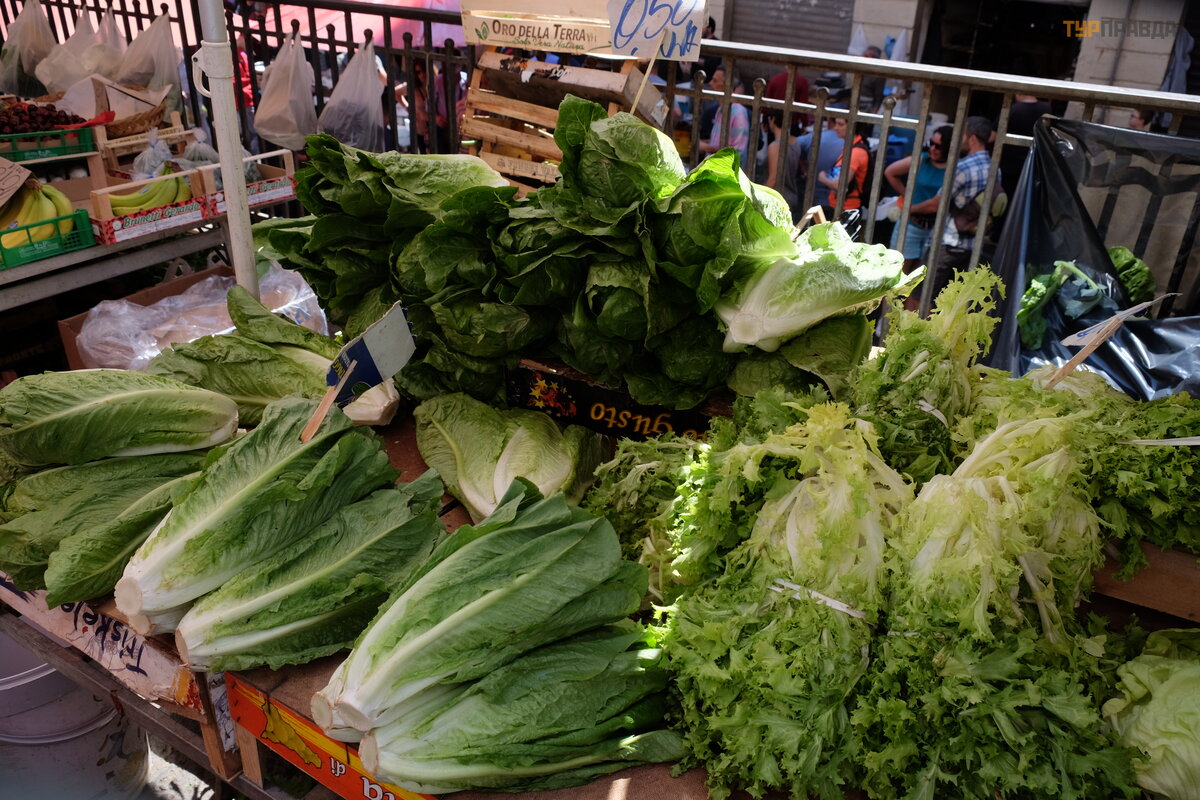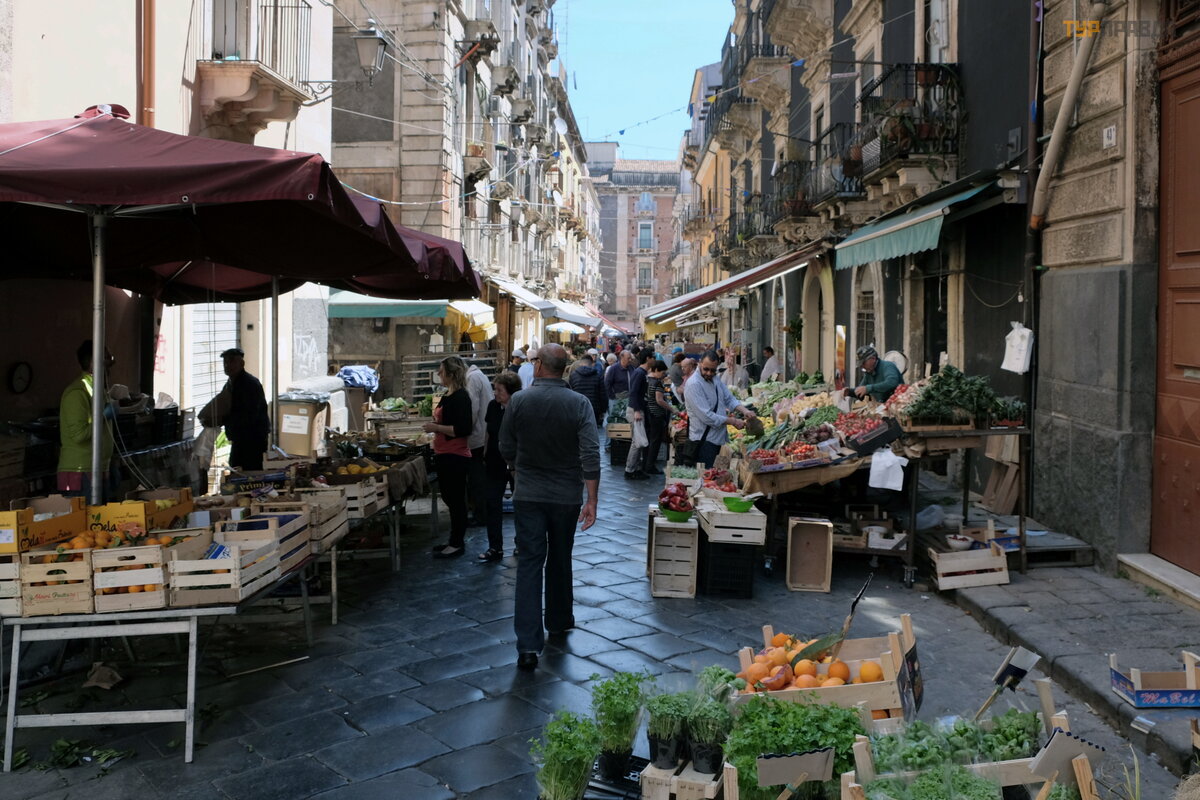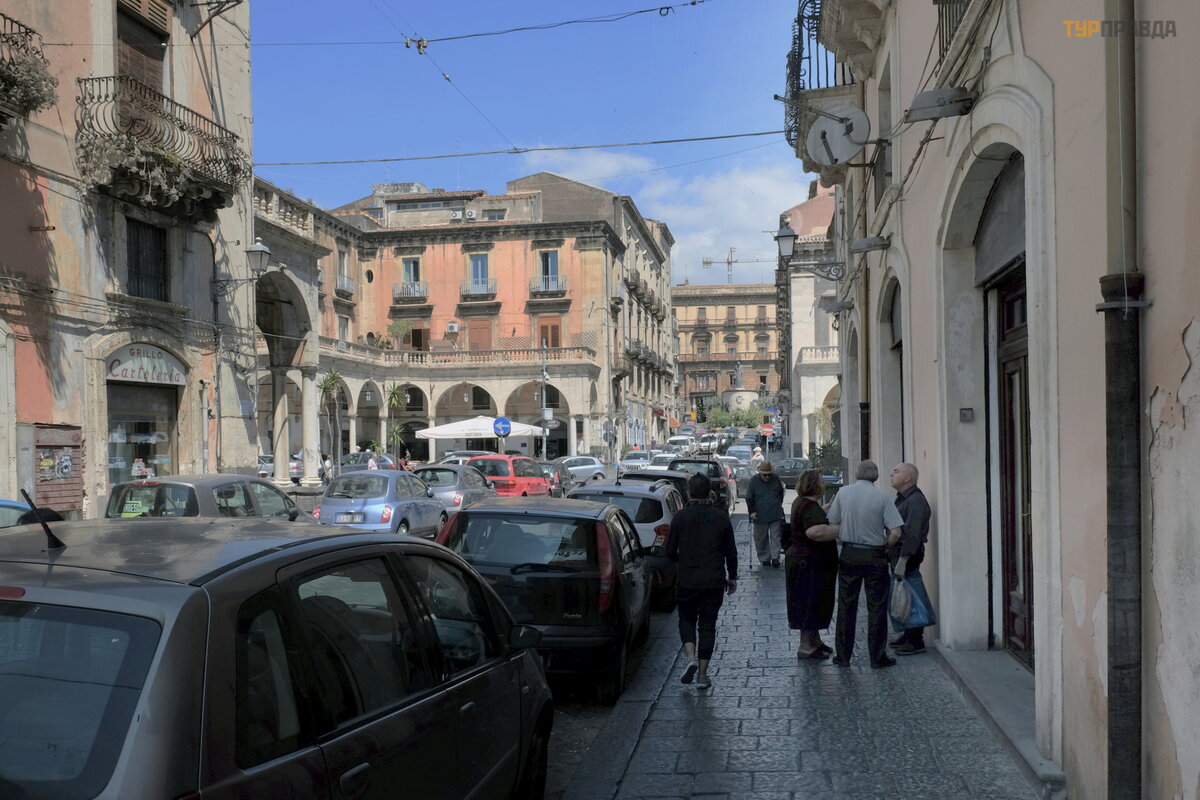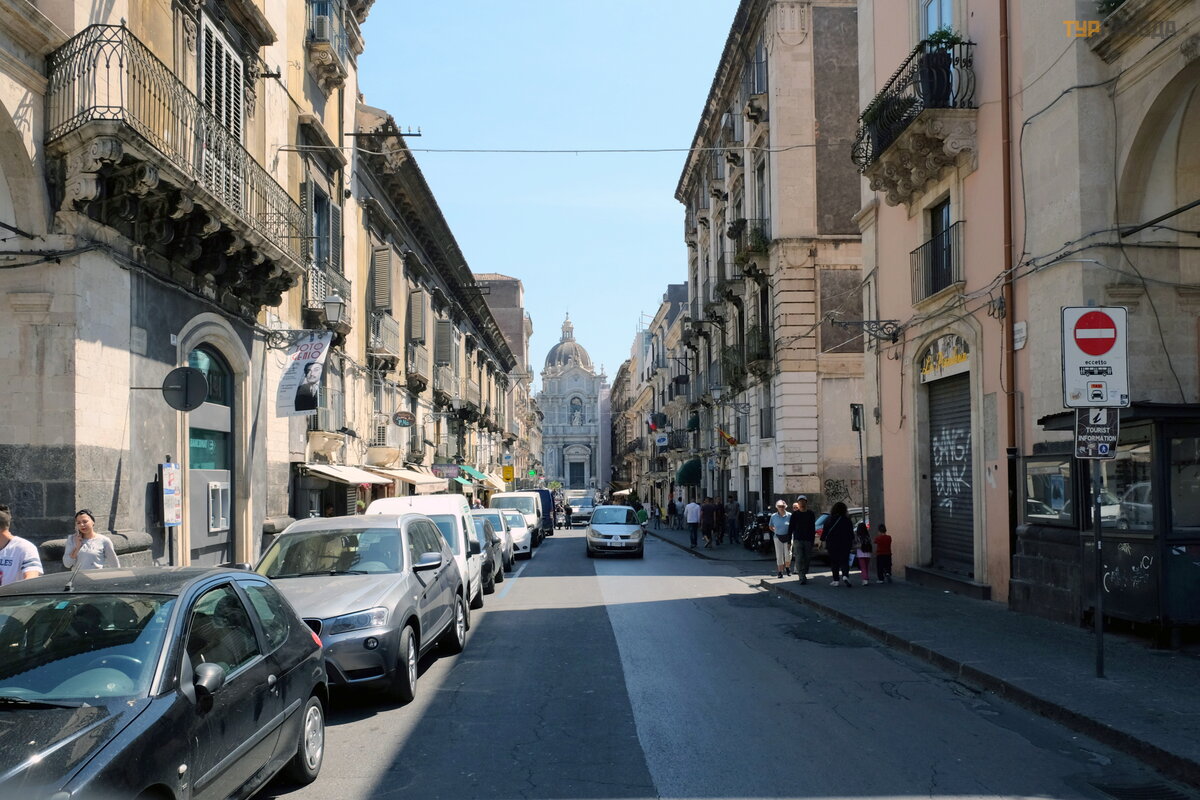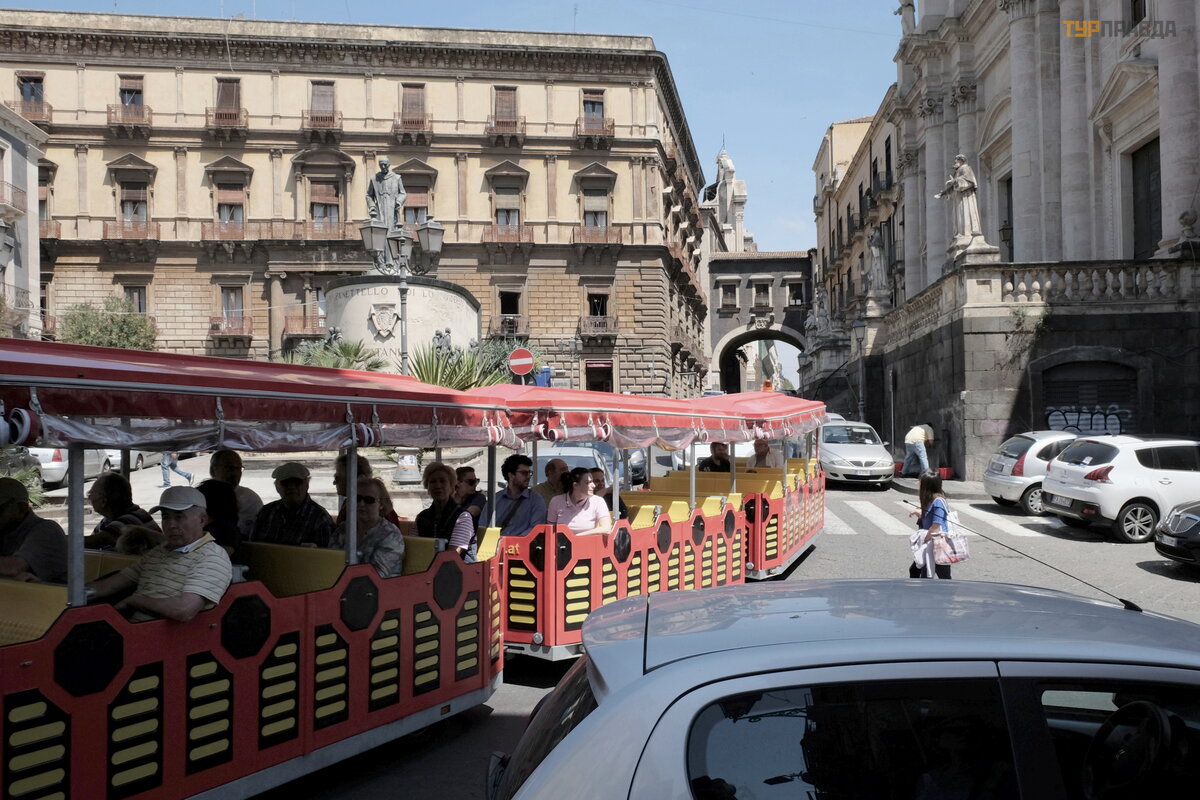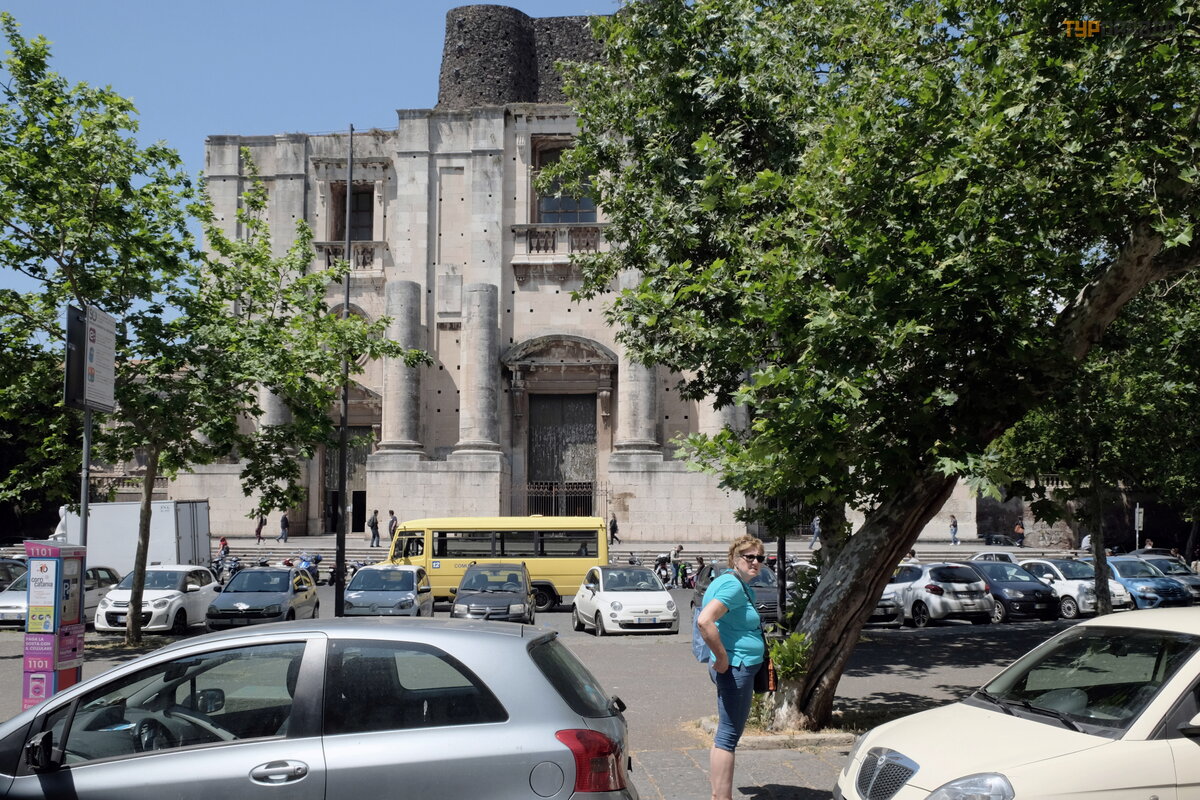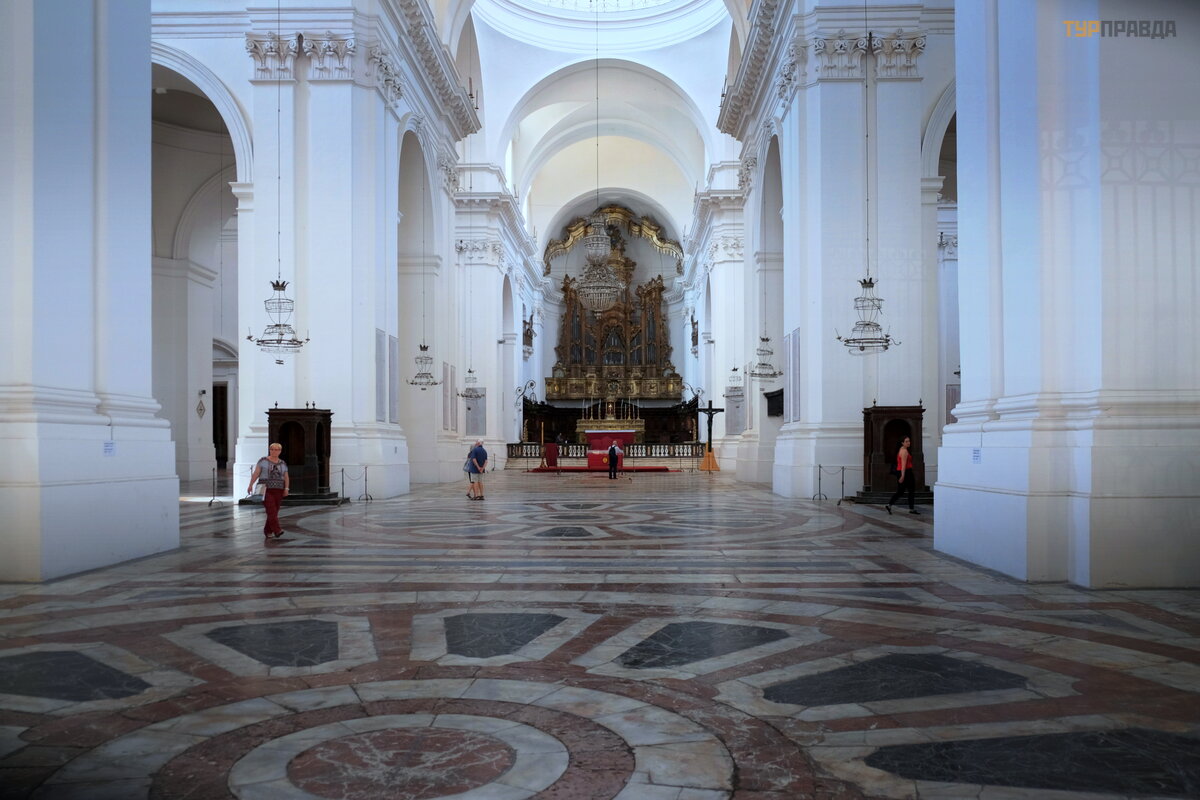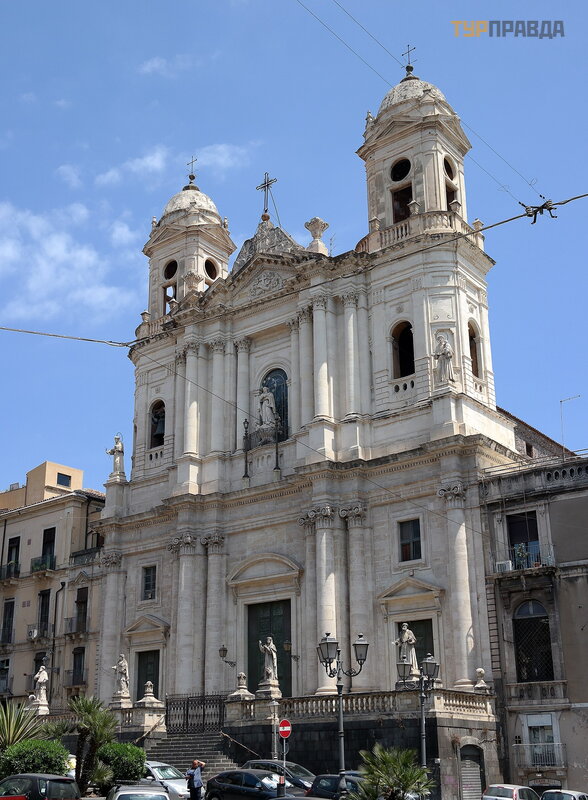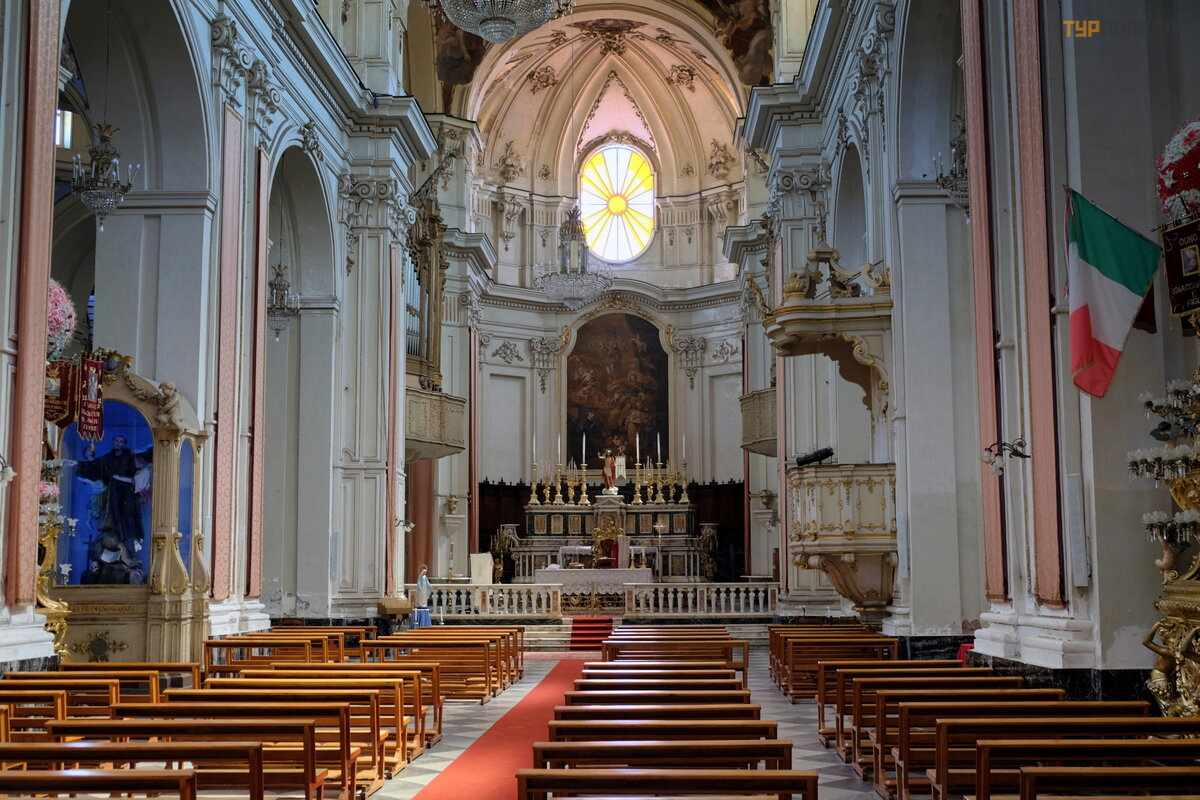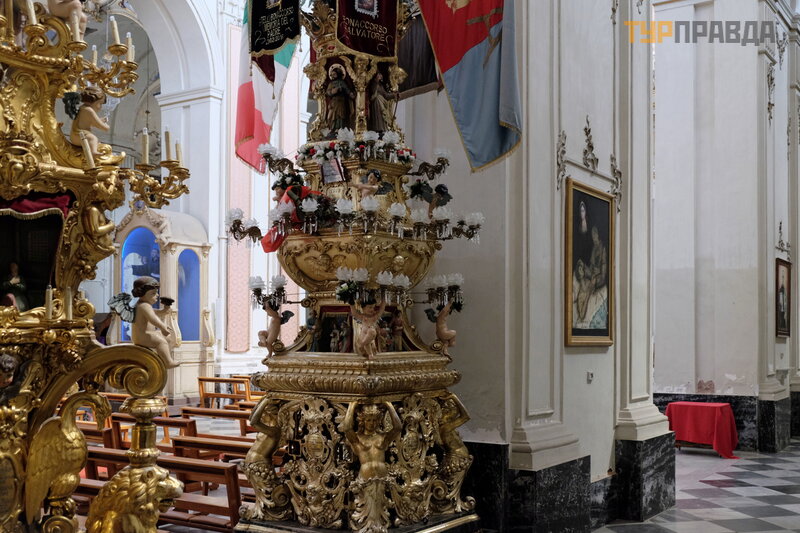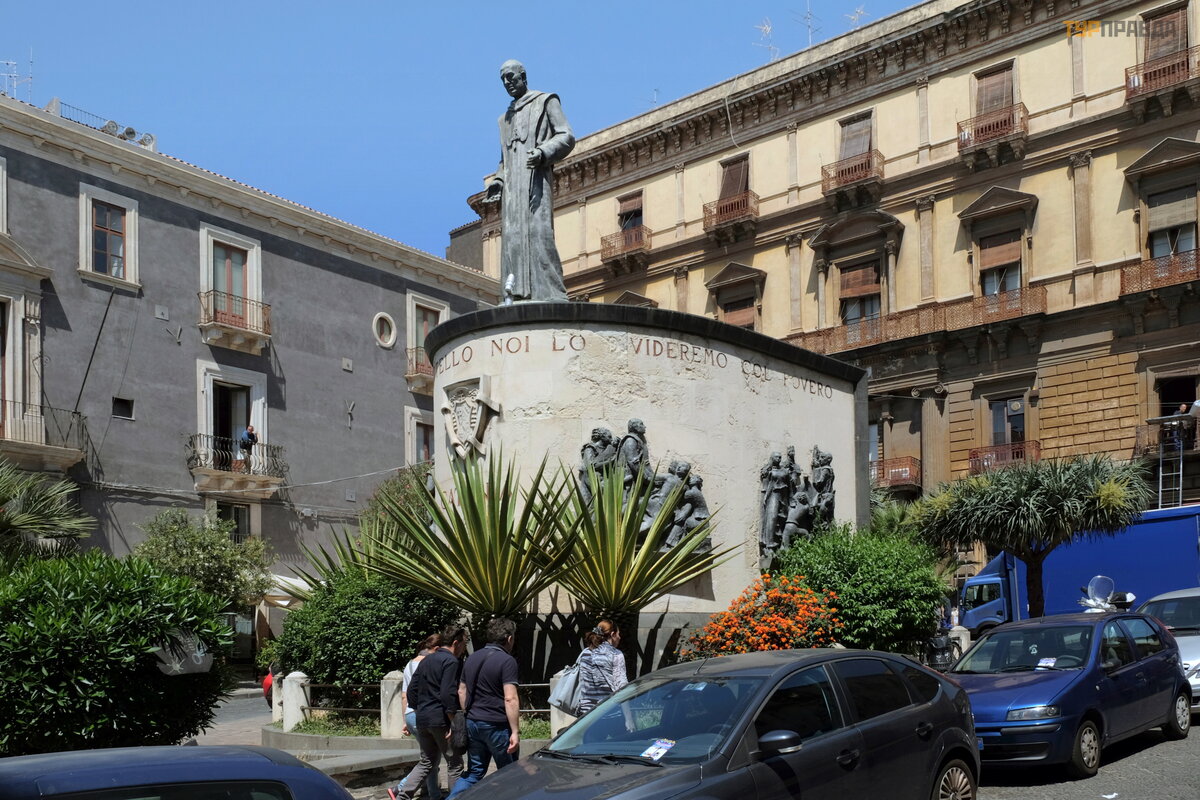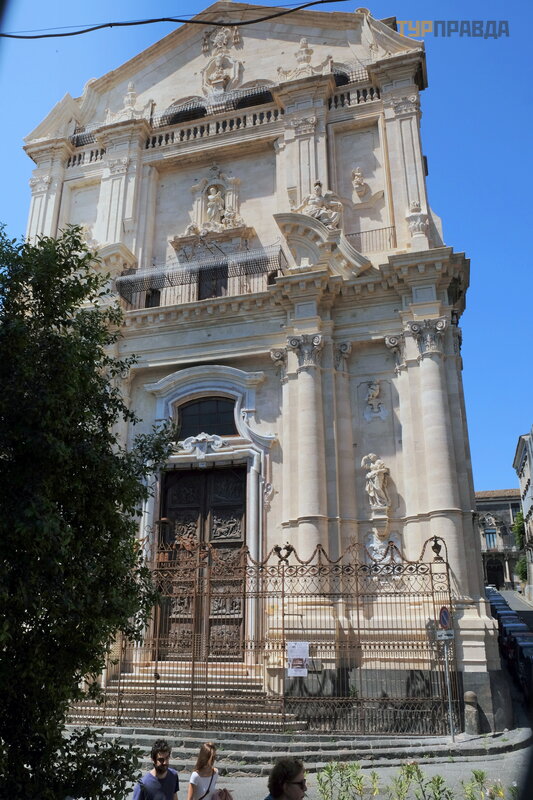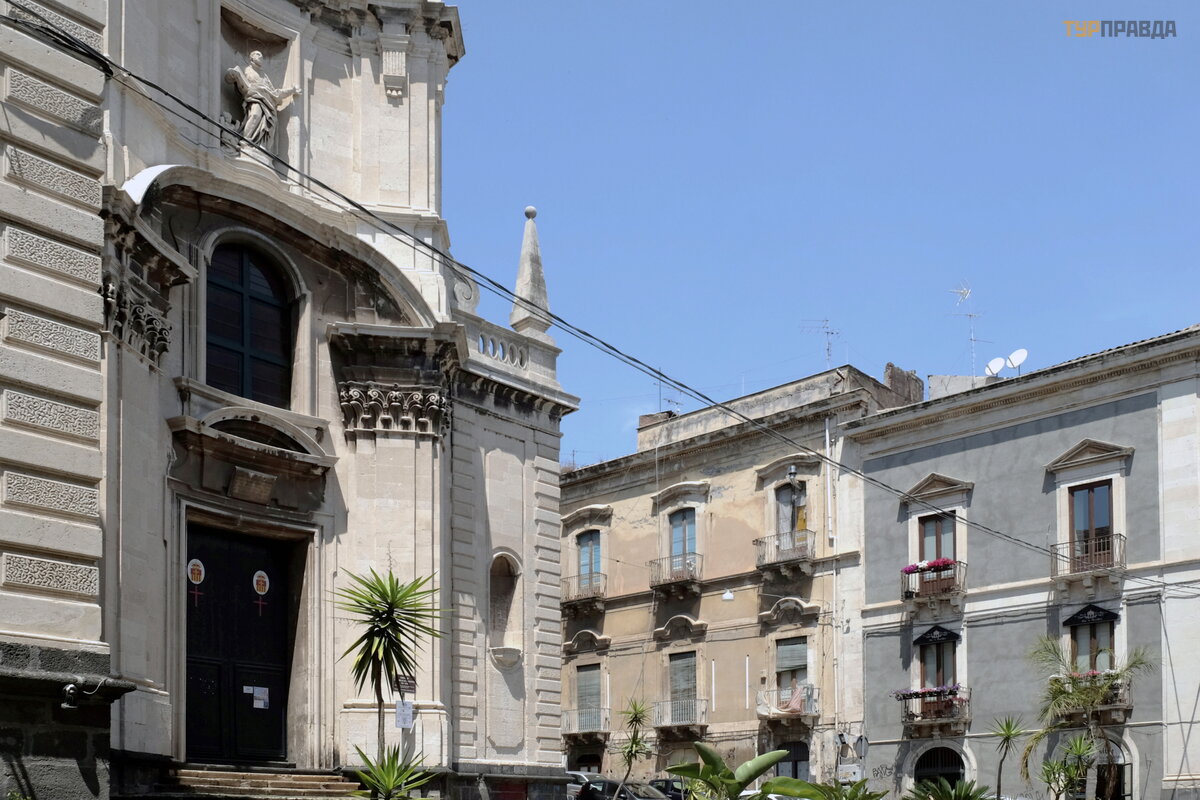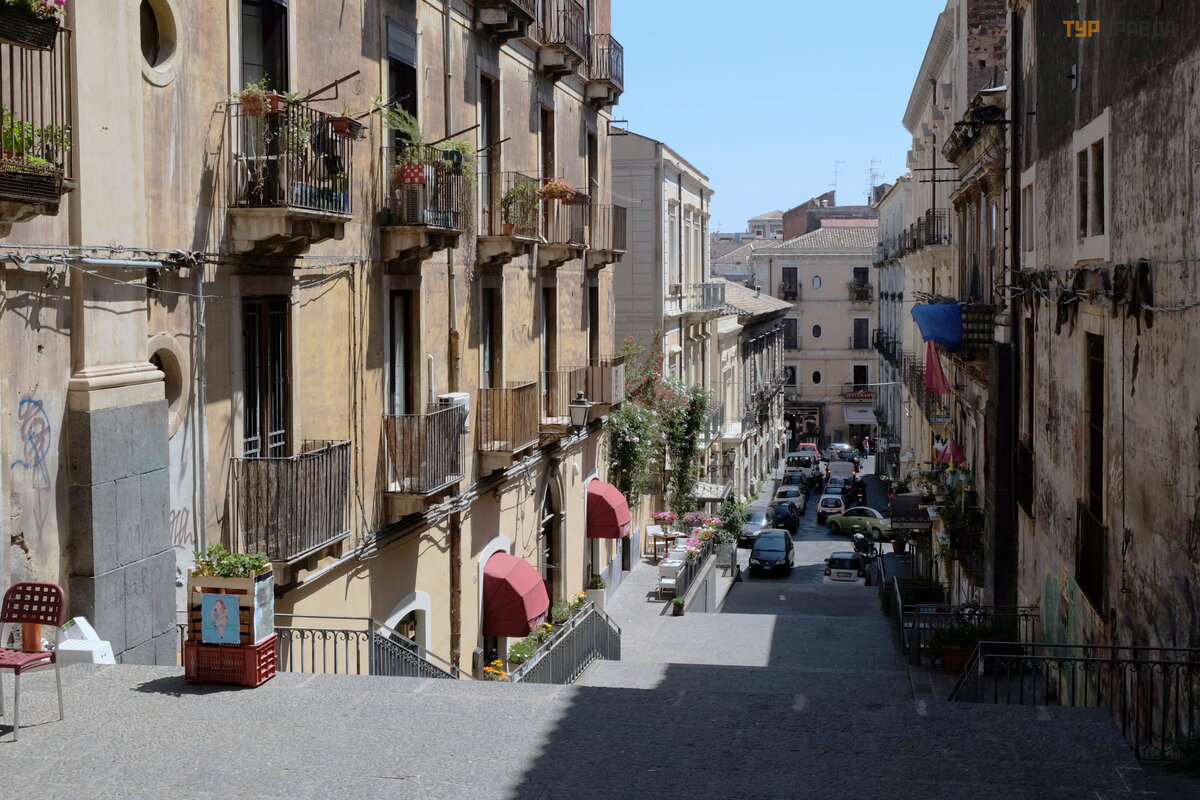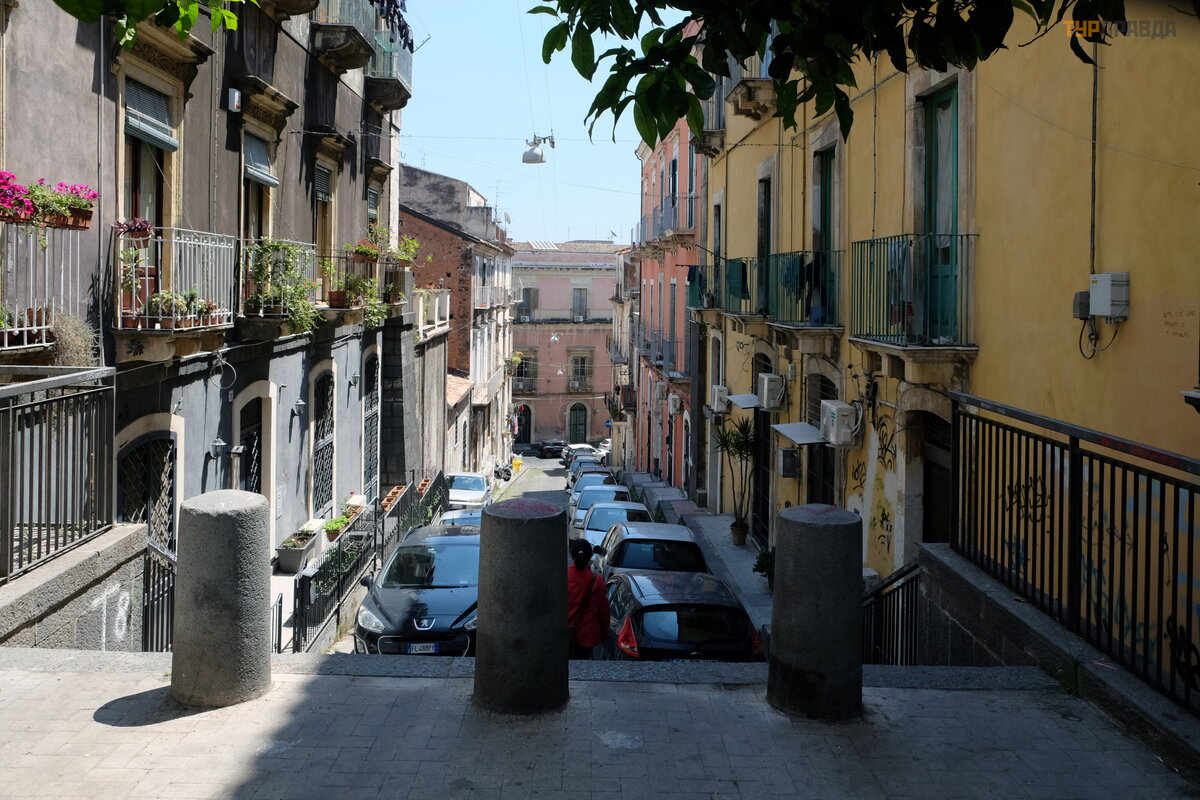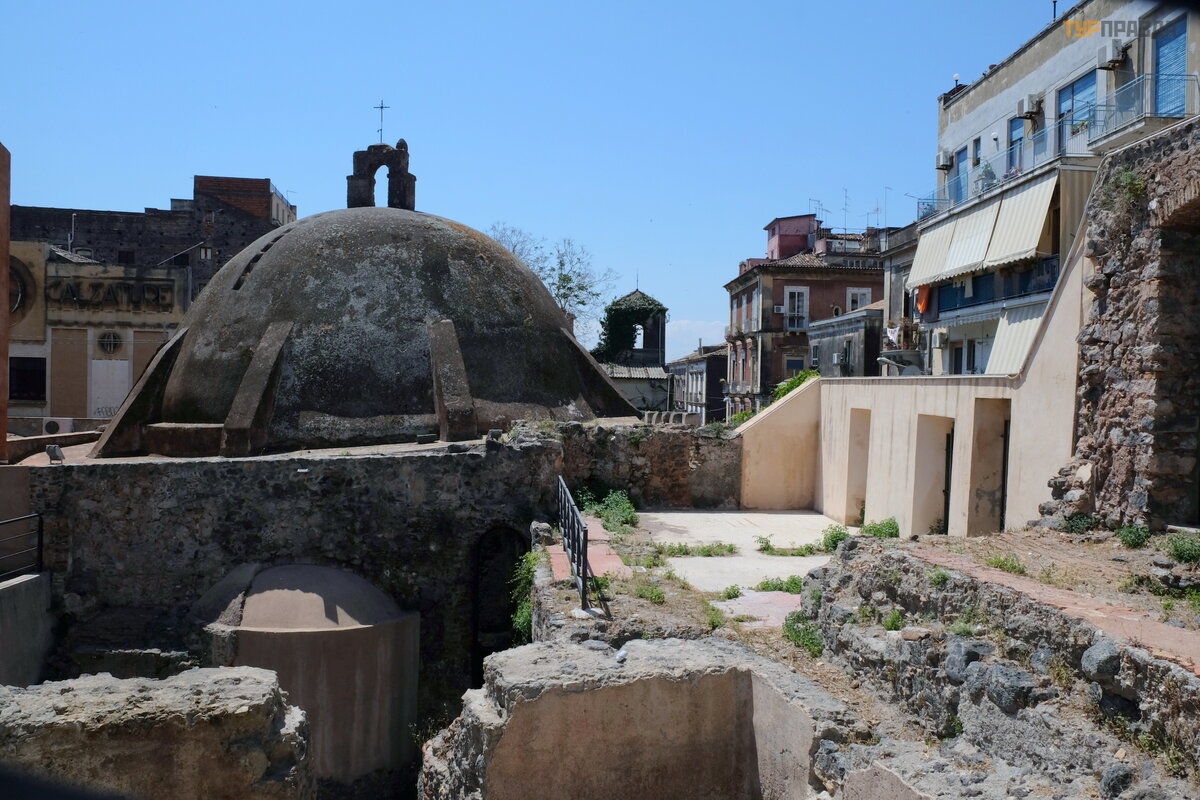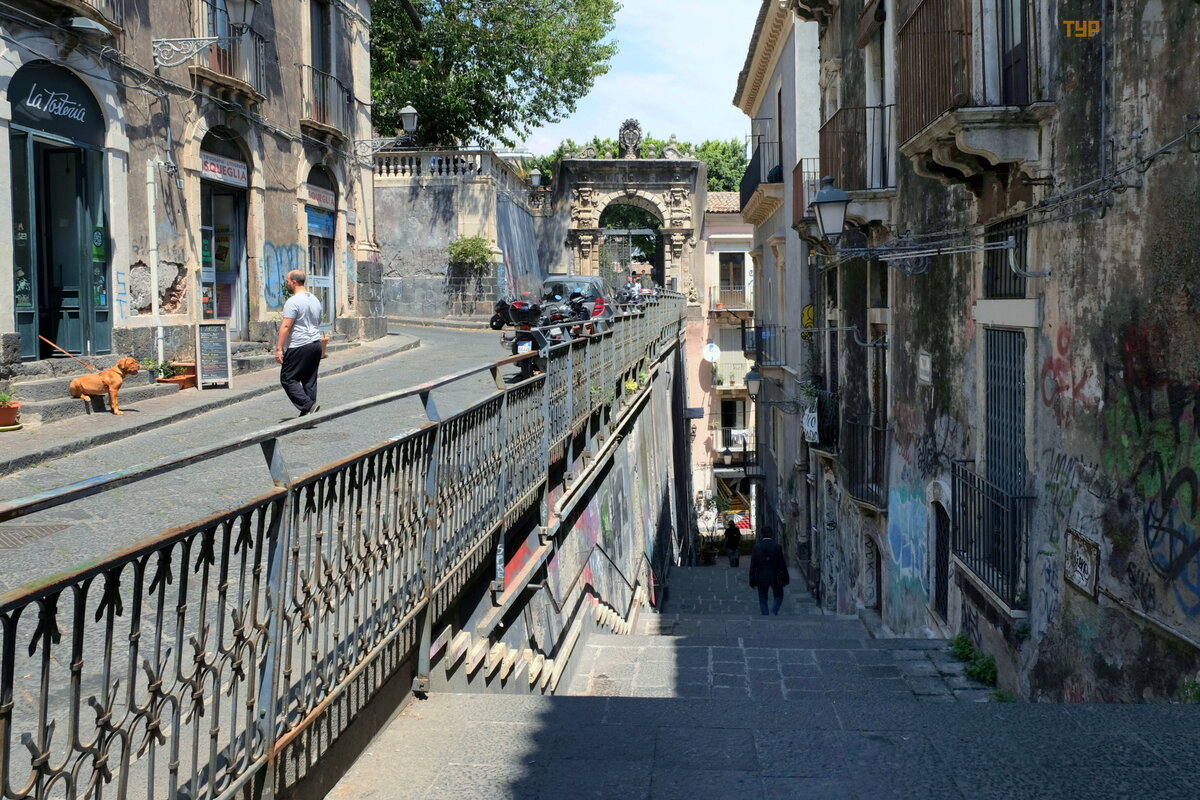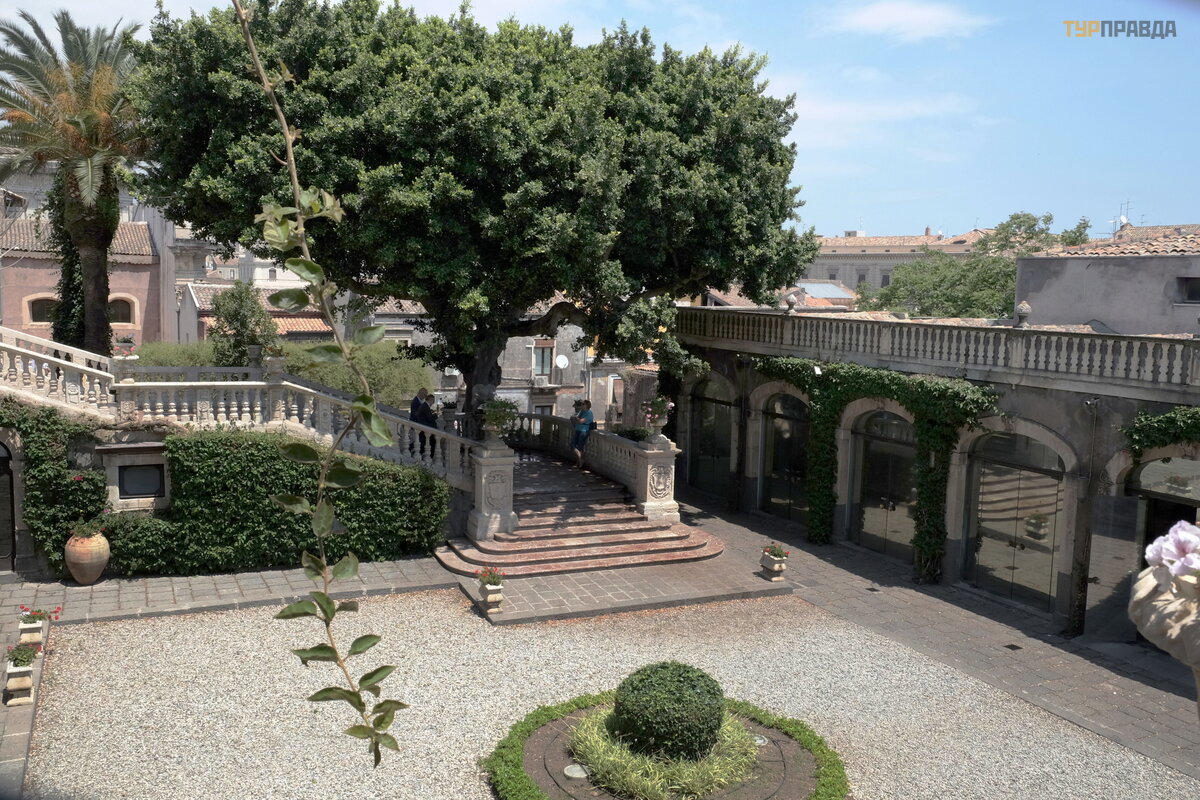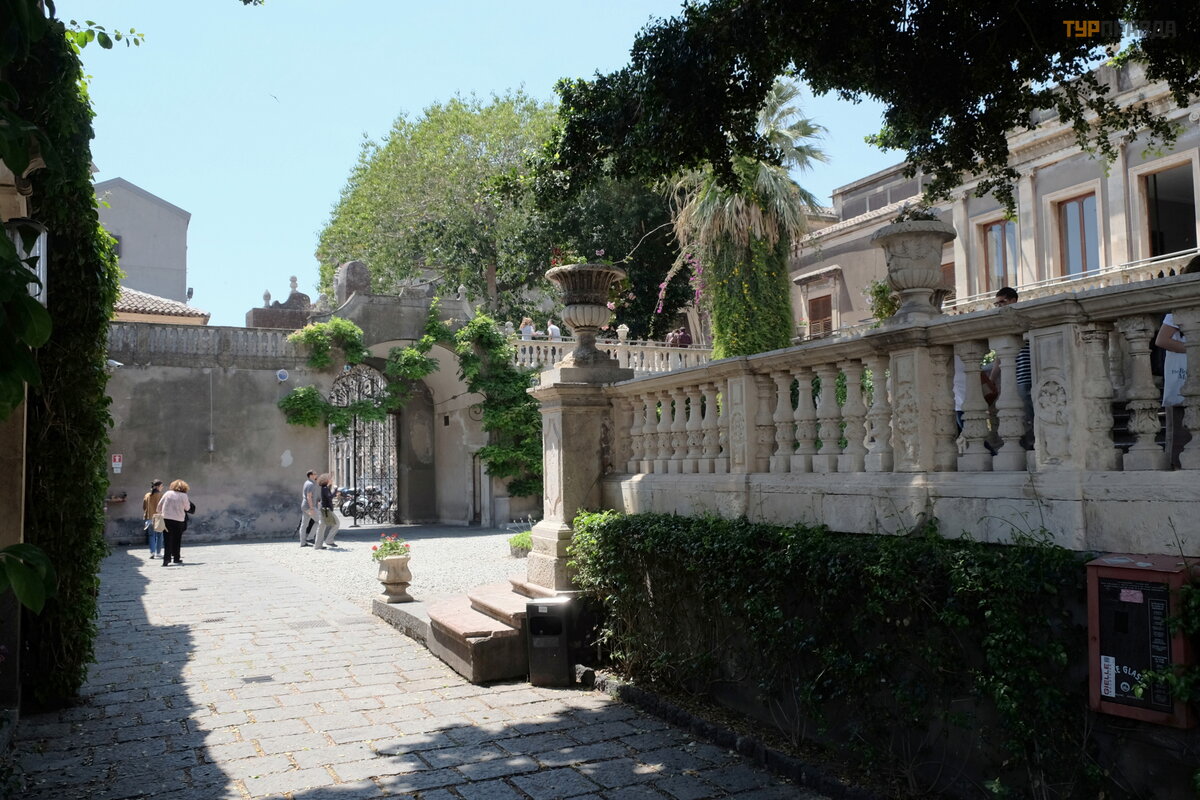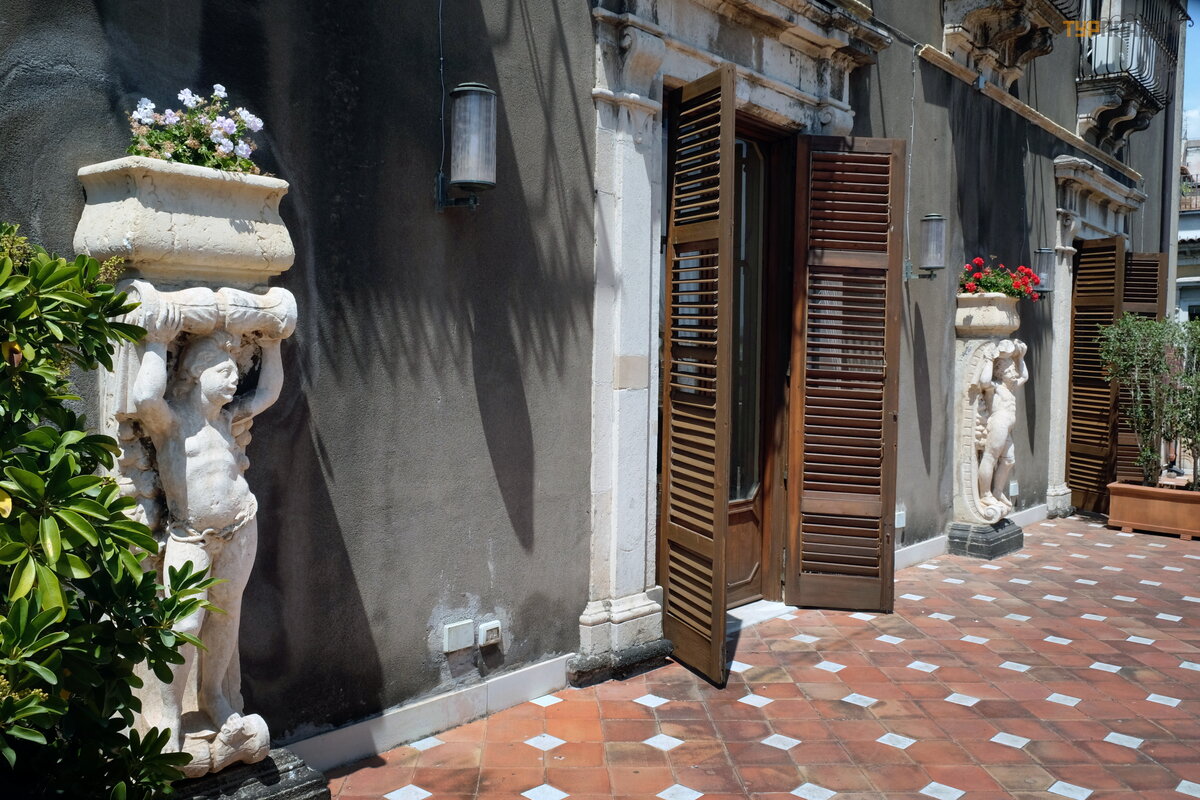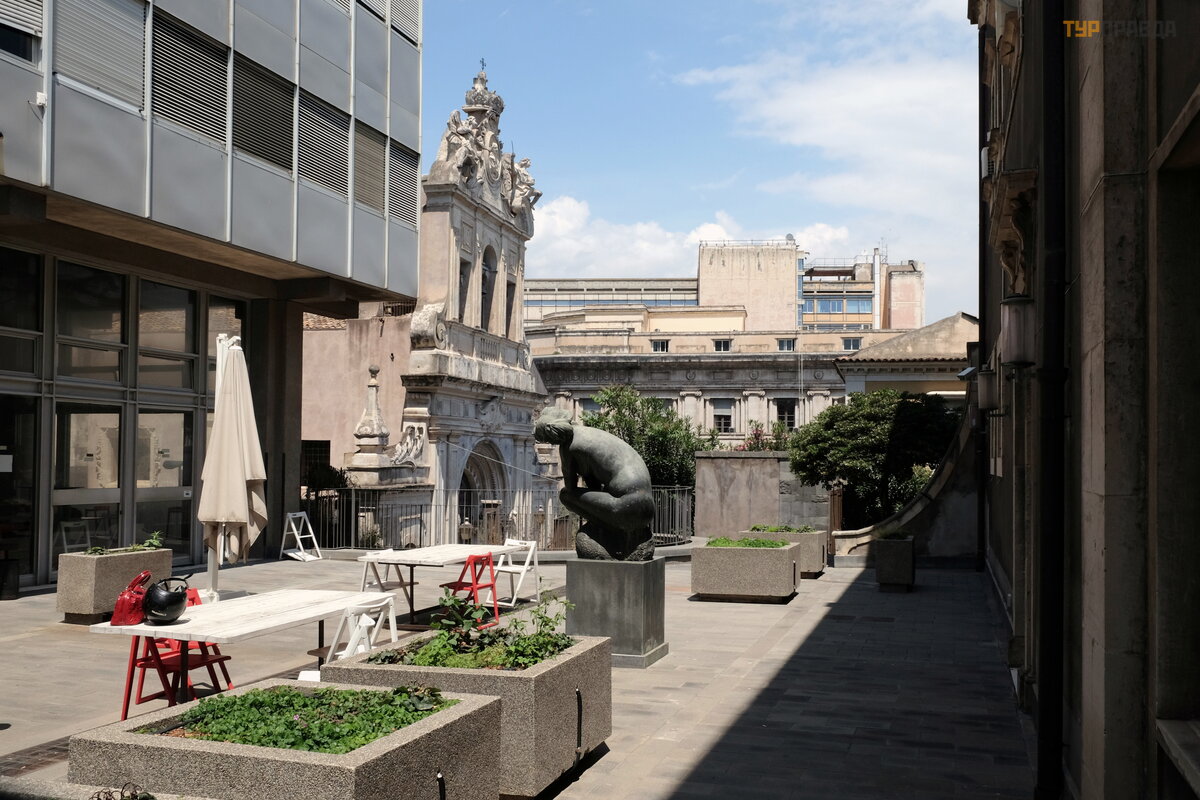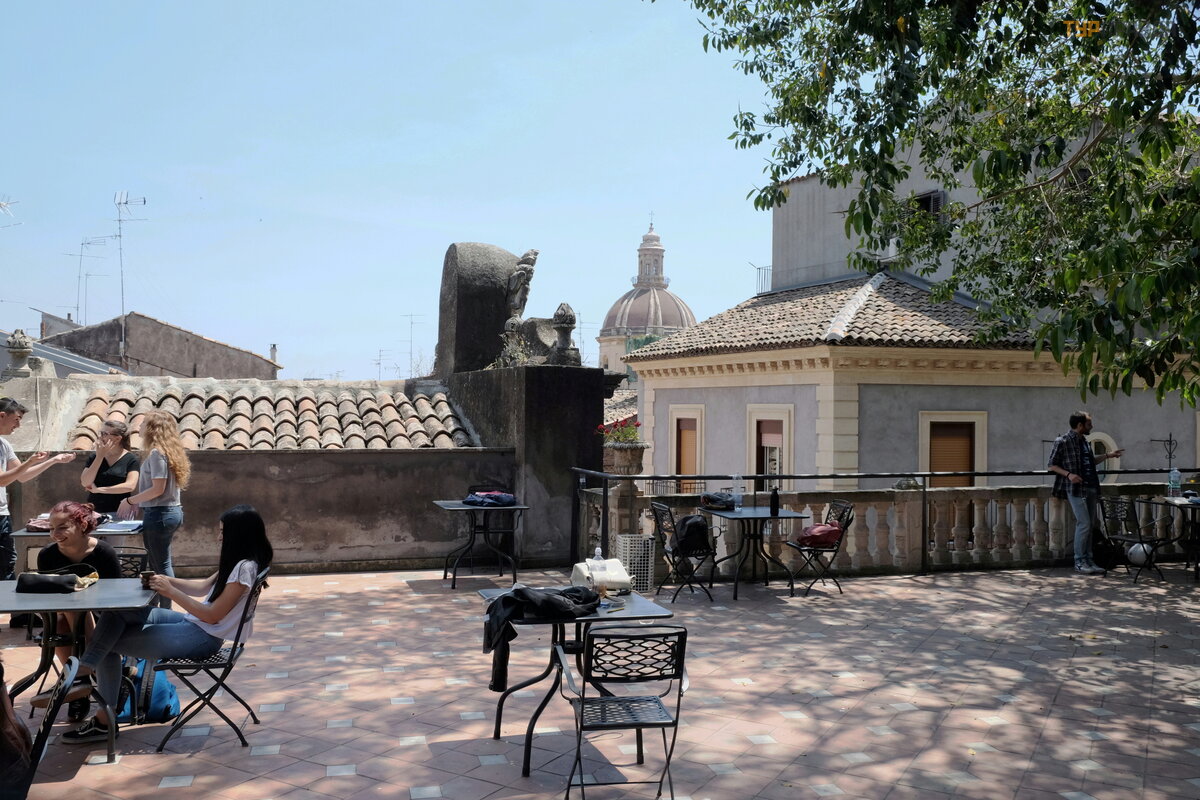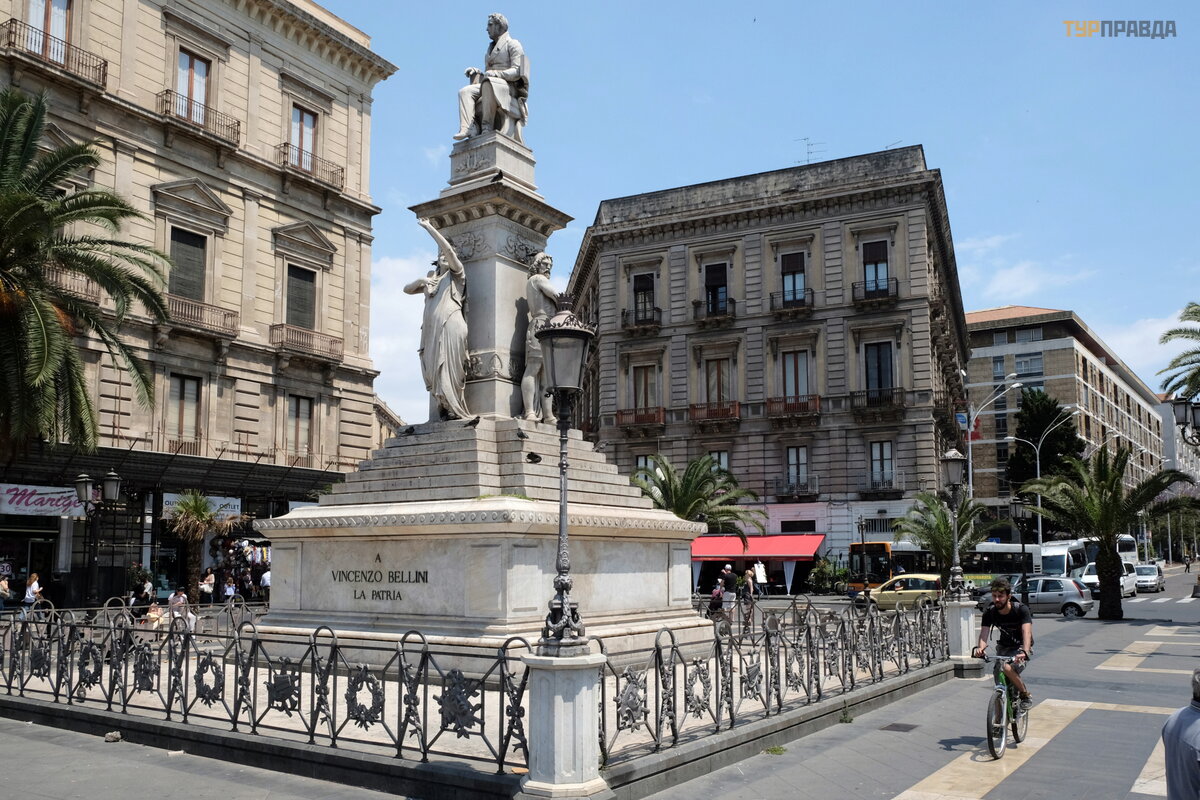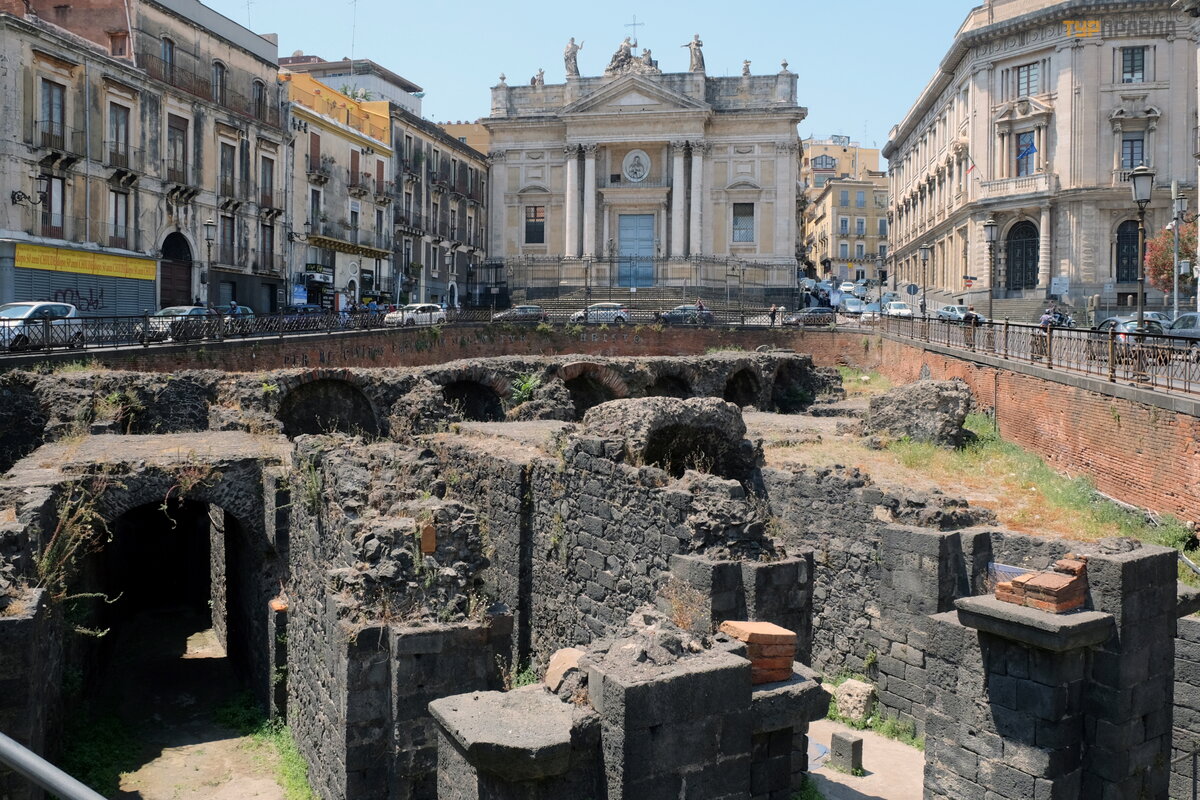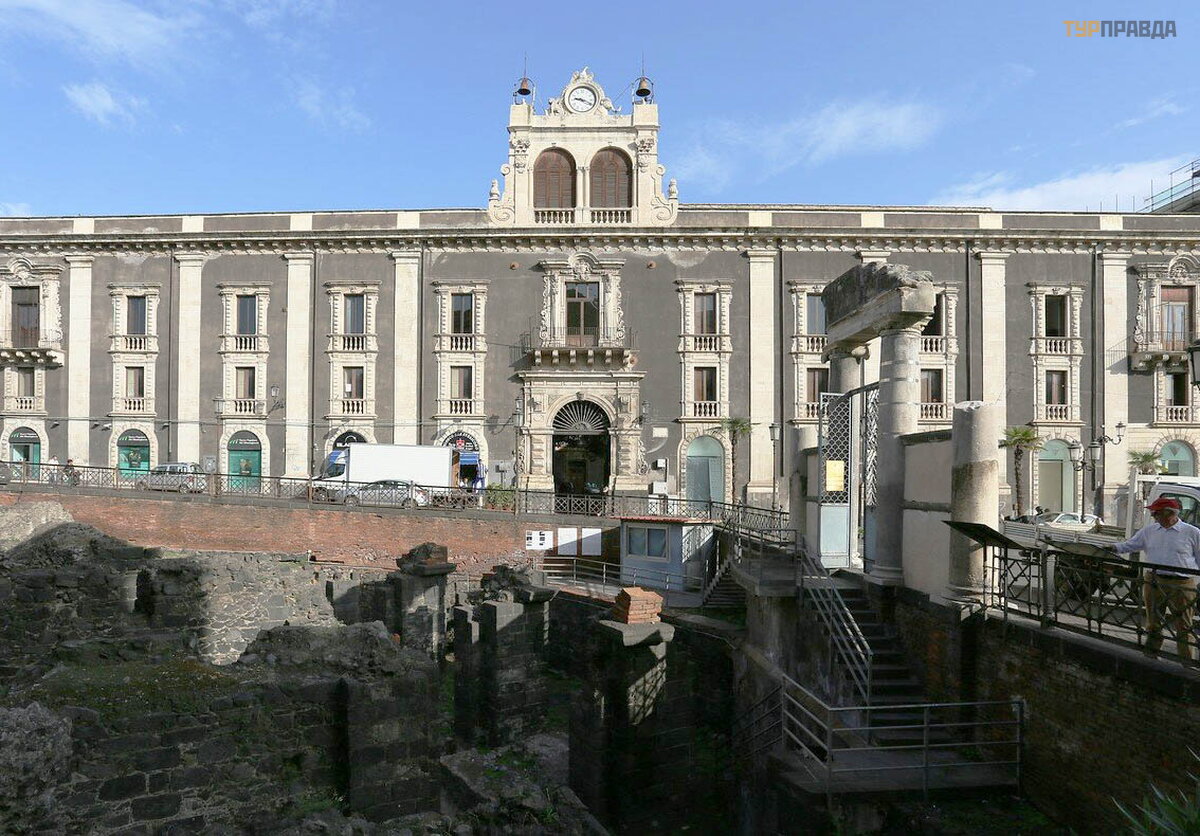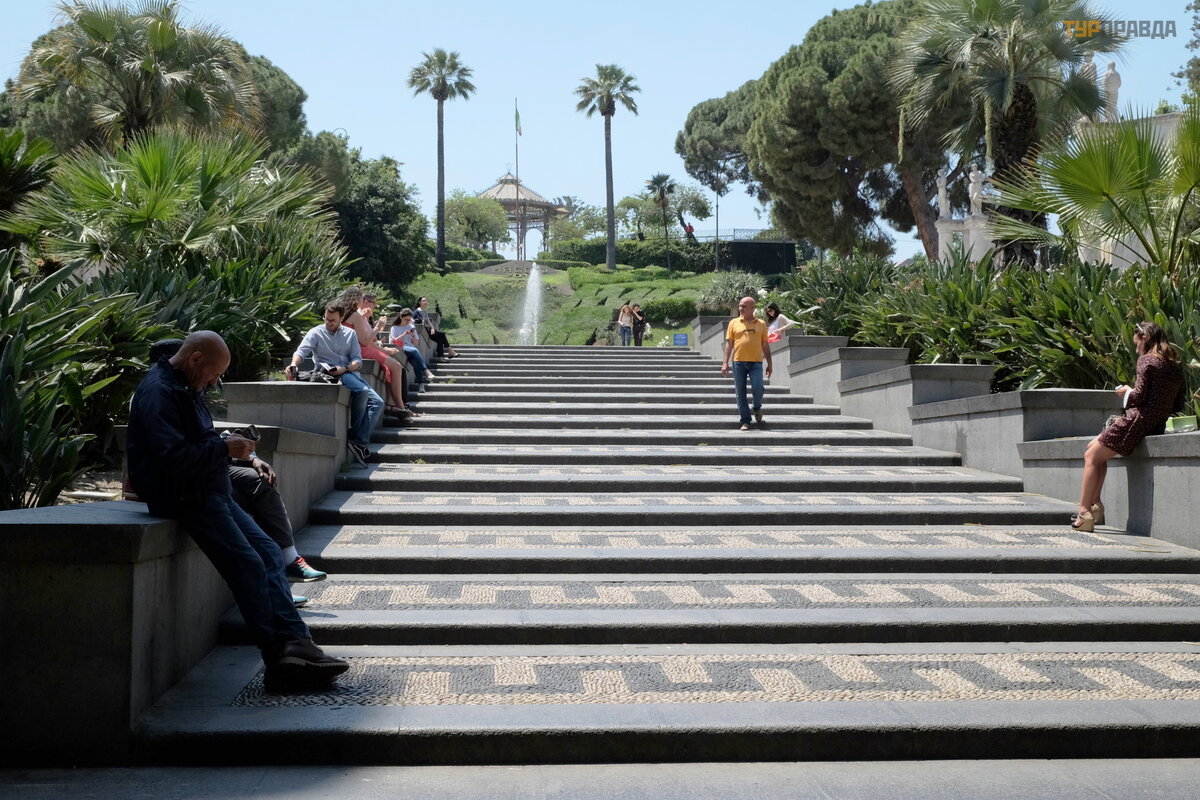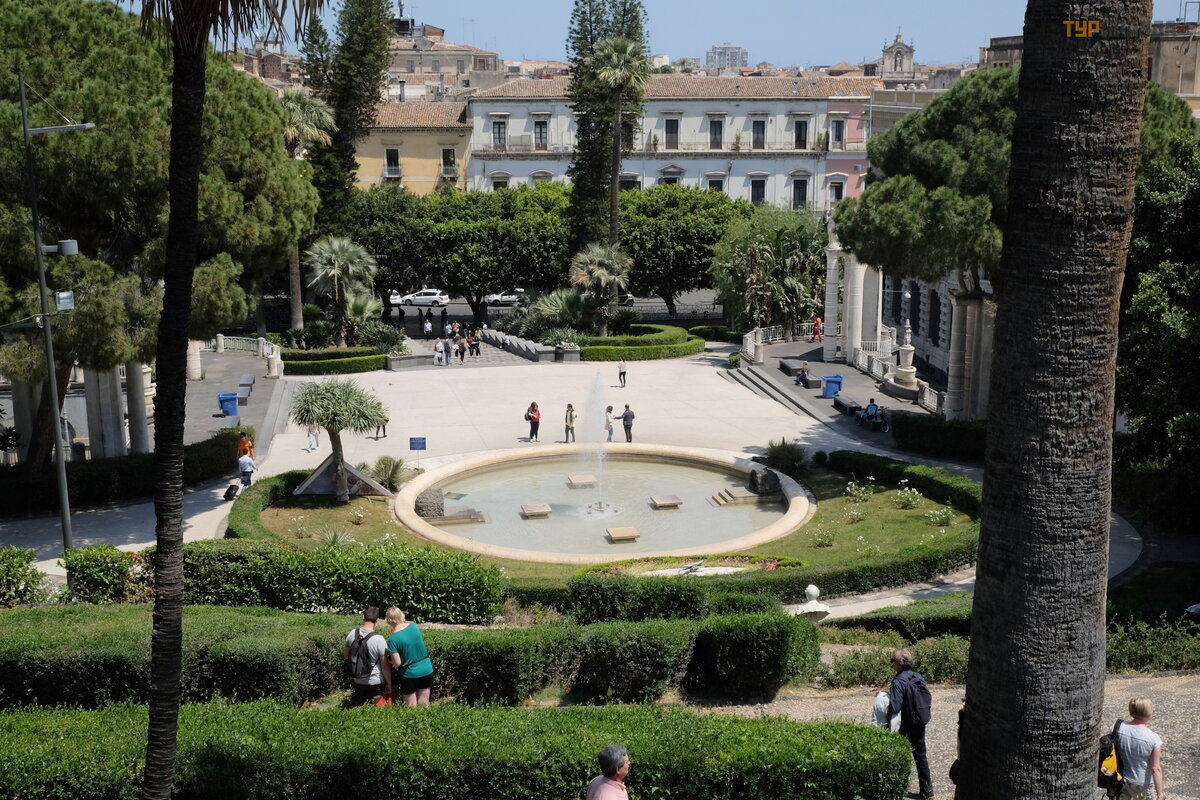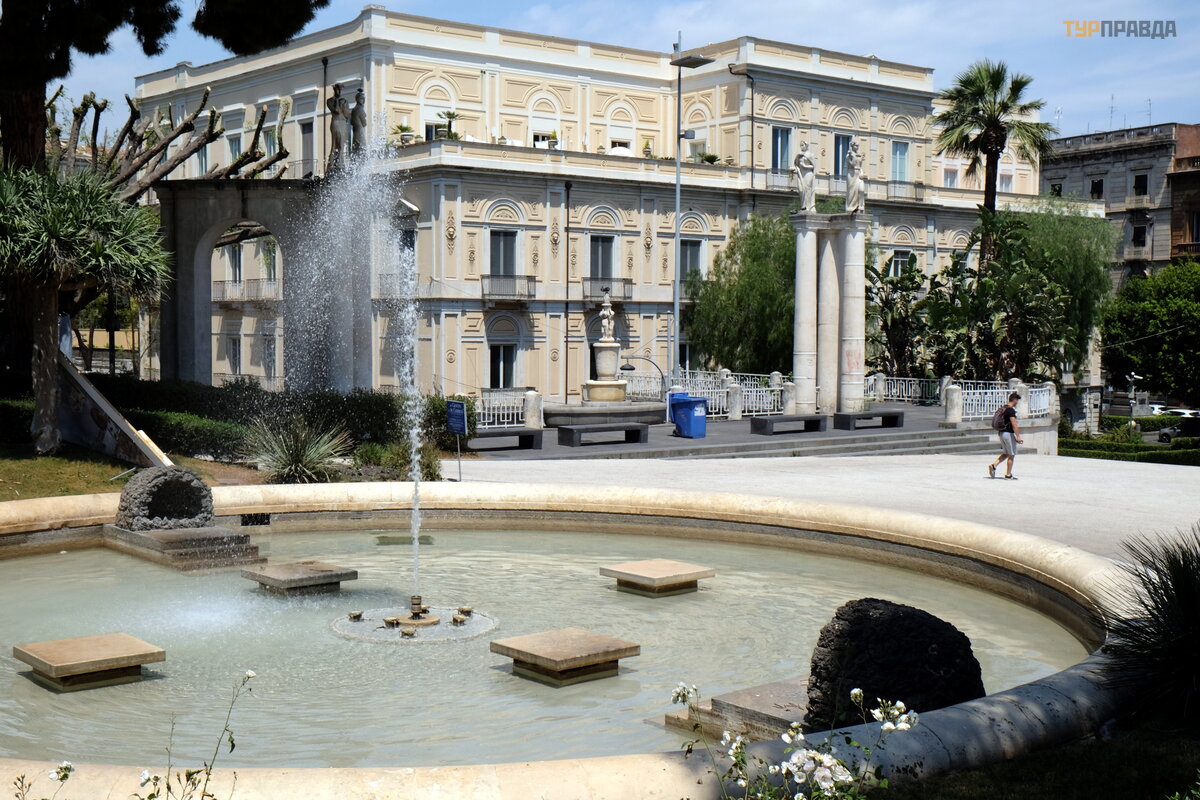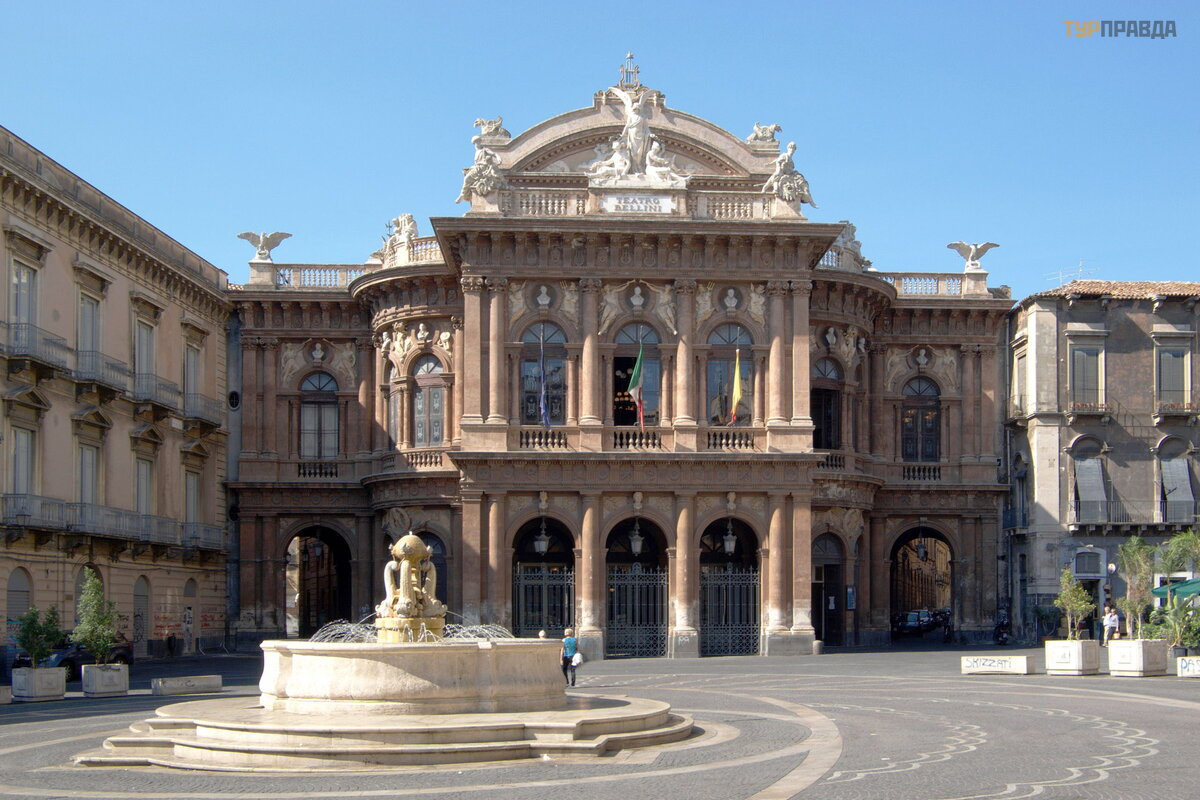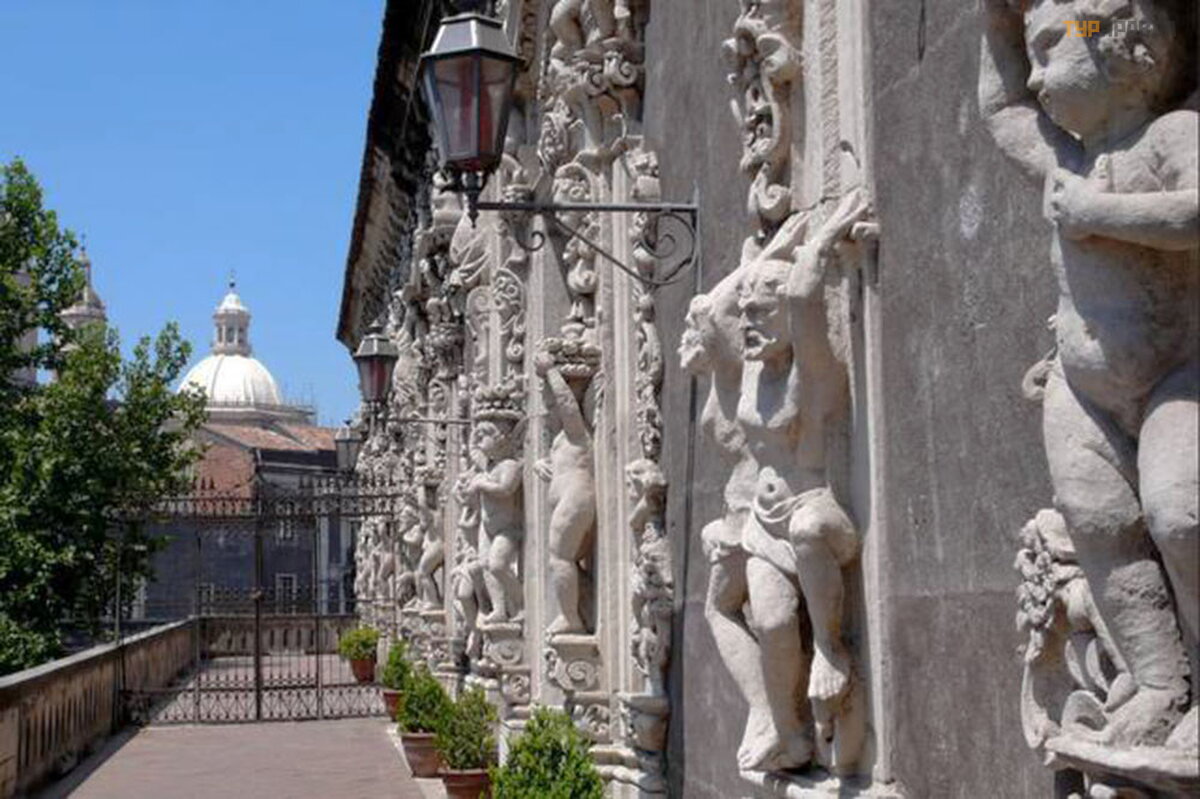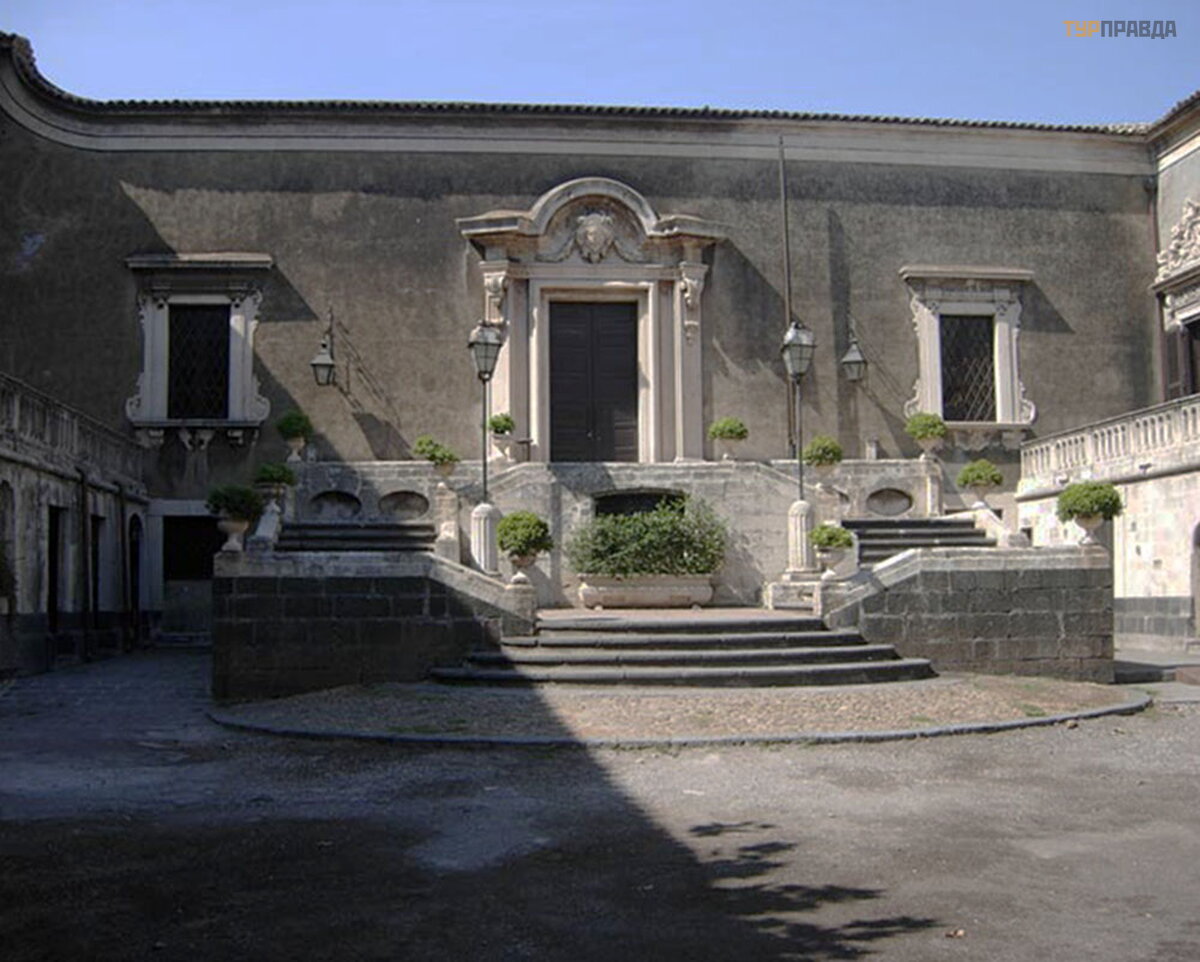Sicily. Part 2. Catania

Sicily. Part 1. Giardini Naxos >>>
The next day, in the morning, we went to Catania. Bus company "ETNA Trasportie Interbus". The ticket was bought in a pavilion at the bus stop, if you take it back and forth, it is more profitable, for one ticket it cost about 7 euros. The travel time is not fixed, the bus is already coming with passengers from Taormina, the interval depends on the time of year, then it was about an hour, the driver lets passengers in if there are empty seats. In the morning the bus was half empty, and we drove forty minutes to the bus station of Catania. In the city itself, the bus makes a few more stops, so you can get to a specific place.
Now a few words about the cities of the "Sicilian Baroque". After the terrible earthquake of 1693, which destroyed most of the cities of southeastern Sicily, the cities decided to rebuild in the Baroque style, which was subsequently transformed,
acquiring specific features: the use of outdoor stairs, complex decor, convex facades in the Borromini style, masks, putti on the facades.
According to the urban renewal plan, the location of streets and reserved free areas were taken into account, so that in case of future volcanic eruptions, there would be sufficient ways for the evacuation of the population.
The city of Catania suffered the most from that earthquake, almost the entire city lay in ruins. The refurbishment of the city was led by the distinguished Sicilian architect Giovanni Battista Vaccarini, who used the local black volcanic stone as a decorative element and not just a general building material. Although many travelers exaggerate, calling Catania a "black city". Under the influence of time and moisture, now the color of the houses is more like light gray.
The city is quite large, there is even a metro line,
although it takes several hours to inspect the historical part. Founded, like Naxos, in the 8th century BC. e. Before the earthquake of 1693, the city survived the eruption of Mount Etna in 1669.
The only surviving building in these cataclysms is the mighty 13th-century Castello Ursino. Its walls and towers did not collapse. Traces of magma are still visible on the masonry. When the castle was built, it stood on a cliff overlooking the Ionian Sea, but today, as a result of the eruptions of Etna and numerous earthquakes, a whole kilometer separates it from the coast. Within the walls of the castle is now a historical museum.
From the bus station, we walk along the main street of Catania - Via Etna, which stretches for 3 km from south to north, full of historical sights, numerous shops and cafes. One of the largest shopping centers, La Rinascente, is also located here.
In cloudless weather, Etna is clearly visible at the end of the street.
We pass by the square with the monument to Vincenzo Bellini, we will come back here.
The Church of San Michele Arcangelo ai Minoriti. The temple and the monastery adjacent to it were built in the second half of the 18th century by architect Francesco Battaglia.
Further at the crossroads is the very beautiful Basilica della Collegiata, also known as Santa Maria del Elemosina.
The facade of the remarkable architect Stefano Ittar is one of the best examples of Sicilian Baroque in Catania.
Ceiling painting:
Let's go to the Piazza Universita, which was designed by Vaccarini, from the Palazzo dell Universita and the Palazzo San Giuliano. The University of Catania is the first university in Sicily, founded in 1434.
Arch to the patio of the Palazzo San Giuliano.
Let's go to the main square of Catania, here Via Etna intersects at right angles with another central street of the city, Via Vittorio Emmanuel II.
The magnificent baroque architectural ensemble of Piazza del Duomo is also the creation of Giovanni Battista Vaccarini. This is one of the most beautiful squares in Italy that I have seen.
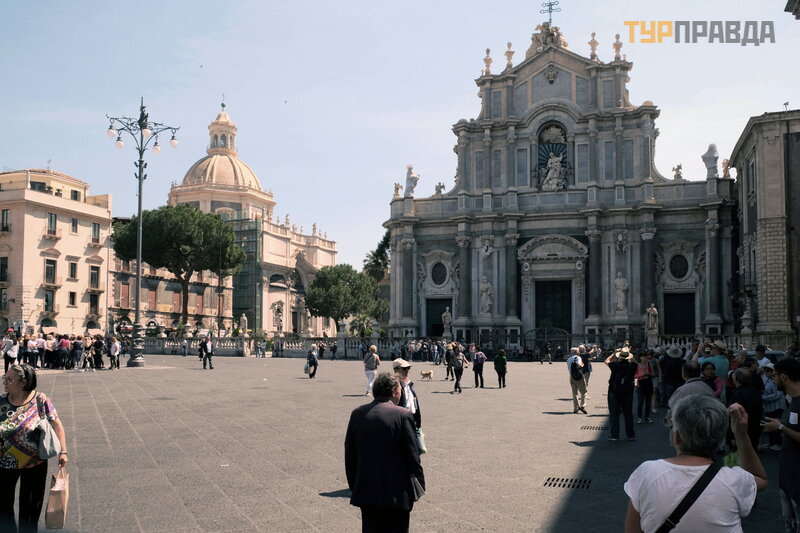
Palazzo degli Elefanti - Palace of the Elephants (1741),
is now the municipality. It was originally called the Palazzo Senatorio. Over the years, the architects Logobardo, Battaglia and Vaccarini worked on the creation of the palace. The palace is decorated with bas-reliefs with elephants, above the main entrance are two statues - Faith and Justice.
In front of this building, Vaccarini designed a fountain consisting of an obelisk on the back of an elephant named Lyotrou (symbol of Catania), (1736).
On the back of the animal is an Egyptian granite obelisk 3.66 m high. The origin of the elephant from black basalt is unclear, something is clearly from the time of Ancient Rome. It looks like an elephant designed by Bernini in Rome.
Another masterpiece of Vaccarini, the Badia di Sant'Agata church (1767), is perfectly visible from Piazza Duomo, to the left of the cathedral.
The church was built on the ruins of the monastery of St. Agatha (1620), which did not stand even for 100 years, collapsing, like most buildings in Catania, during the strongest earthquake of 1693.
The interior was designed by Nicola Danieli. Those who wish can go up to the observation deck.
In the center of the square is the Cathedral of Catania (1739), the Cathedral of Saint Agatha (Cattedrale di Sant'Agata), the patroness of the city, Sicily and Malta. The temple was erected at the end of the 12th century on the ruins of a Roman building destroyed by an earthquake. Right during the service from the catastrophic earthquake of 1693.7000 praying citizens were buried under their own rubble. It was rebuilt several times, today's facades and interiors of the cathedral are decorated by Vaccarini in the Baroque style.
The interior of the basilica is rather modest:
The relics of St. Agatha in the chapel at the altar:
Saint Agatha (Agatha) is one of the most revered Christian martyrs, executed in 251. First, Agatha was sent to a brothel, then thrown into prison, where her breasts were cut off. There are many works of the most famous artists on this subject, and all of them depict the instruments of martyrdom in different ways: from scissors to pincers. After the torment, Saint Agatha was burned at the stake.
Monument to Agatha at the Cathedral:
The world-famous composer, a native of the city, Vincenzo Bellini, is buried in the cathedral.
Palazzo Seminario dei Chierici (Seminary Palace) was designed by the architect Alonso Benedetto, the only local Catanese architect who survived the terrible earthquake of 1693.
Now the Palazzo Chierici houses the Diocesan Museum
With the help of a special passage thrown across via Etnea, the Cathedral of St. Agatha is connected to the Seminary Palace (Palazzo Seminario dei Chierici). This passage is part of the city walls built during the reign of King Charles V in the 16th and 17th centuries. Later, the fortress walls were destroyed, but a passage called the "Uzeda Gate" remained.
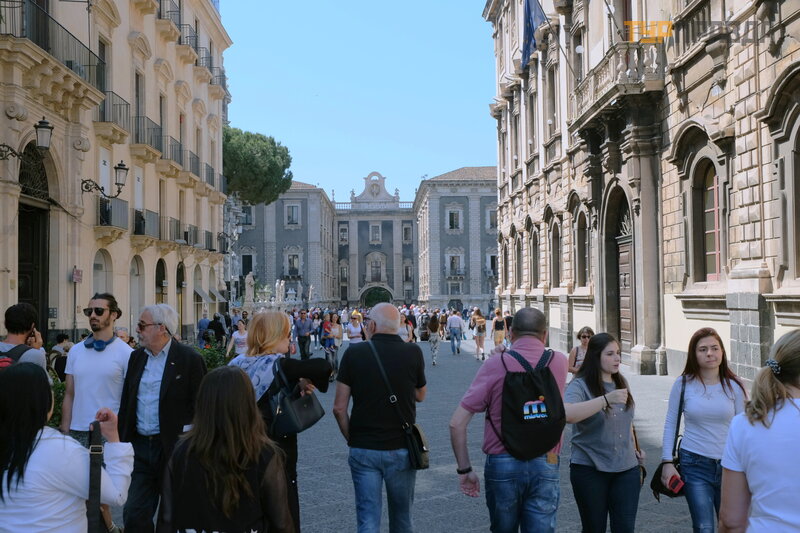
Through this gate you can go under the railway, through a cozy square to the sea and Castello Ursino:
There is a large port in Catania, cargo, commercial, passenger cruise ships moor here. Ferries to Naples and Malta also leave here. Catania is a very convenient place as a base city for exploring Sicily, because it is a transport hub that connects three coasts at once,
good rail and bus connections. In addition, near the city there are several types of beaches at once - with sand, pebbles, volcanic origin, rocky. The water in the sea is very clean plus a stunning view of the volcano.
On the edge of Piazza Duomo is another Amenano Fountain (1867). The central sculpture of the fountain depicts the god of the Amenano River (the Amenano River now flows at a depth of two meters underground). The cool water of this river gushes from the fountain on the Cathedral Square, not far from the monument with the elephant. The inhabitants of Catania call it fontana dell'acqua a linzolu - "water fountain in the form of a sheet. "
If you go down behind the fountain, then you get to the famous Fish Market:
The basis, of course, is the fish and other seafood market, but meat, poultry, a lot of vegetables and fruits are also sold.
After looking at the market and buying fruit, by lunchtime we are moving to Crusader Street.
Via Crociferi (Street of the Crusaders) is a rare example of architectural harmony and unity, the most beautiful street in Catania, completely built up with beautiful buildings of baroque architecture of the 18th century. Students of architectural faculties from universities around the world come here on purpose to see not individual buildings of this style, but entire blocks with complex buildings from the heyday of the Italian Baroque.
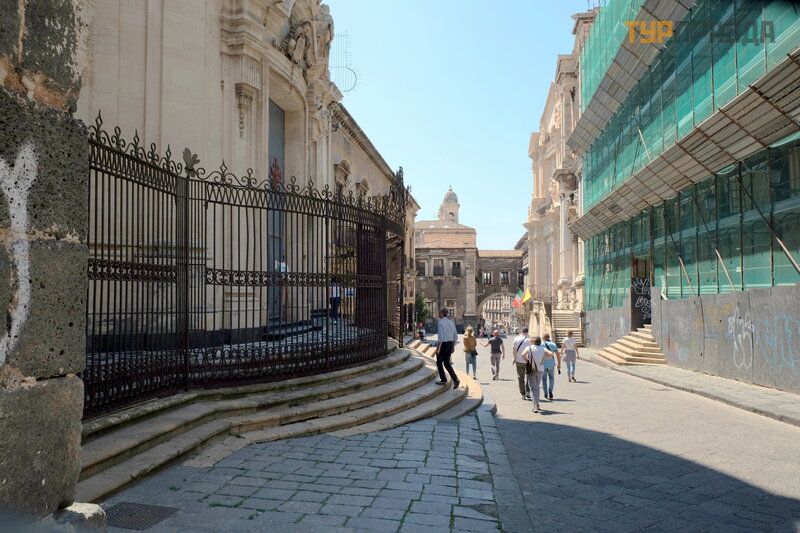
The Benedictine monastery is easily recognizable thanks to the arch facing the street. Now part of the buildings has been given to the university.
This huge building is the Church of St. Nicholas (Chiesa di San Nicolò l'Arena), the largest church in Sicily. The church was repeatedly rebuilt, but was never completed due to lack of funds.
The church is part of the Beneditzine monastery complex.
Church of St. Francis of Assisi:
Monument to Giuseppe Benedetto Duzmet, Cardinal and Archbishop of Catania (1867-1894). To the left of the monument is a three-story building made of volcanic stone, built in the early 18th century.
This is Palazzo Gravina Cruyllas, where Vincenzo Bellini was born and spent his childhood and youth.
The most beautiful church on this street is San Benedetto. Another masterpiece by Vaccarini. But already the churches closed for a siesta and did not get inside.
The next church is St. Francisca Borgia (Chiesa di San Francesco Borgia):
From Via Crociferi we go down, picturesque streets descend.
We pass by the Terme della Rotonda - this is a preserved caldarium (part of the thermal baths), built in the 1st century AD. e. as a Roman bath, and in the Byzantine period it was rebuilt into the Church of the Virgin Mary.
Arrived at Villa Cherami, late 17th century:
Patio with a flower bed, palm trees and trees. A luxurious front staircase, enclosed in a stone balustrade, leads to the palace from it.
The facade of the palace, also the work of Vaccarini:
Today, students of the Faculty of Law of the University of Catania study within the walls of the villa. Through the university you can go to the other side.
In fact, we made a circle, reaching Stesikoro Square with the Bellini monument.
The ruins of a large amphitheater built in the 2nd century AD. e. , have been under a layer of volcanic ash for centuries. About a third of the structure has been excavated, most of which is still under the square and surrounding streets. Counts,
that the gray granite columns that adorn the nearby Church of St. Agatha in the Dungeon were taken from the first tier of the amphitheater.
The Church of Saint Agatha in the Dungeon (Chiesa Cattolica di Sant'Agata al Carcere) was closed for a siesta, built on the site of the prison where the saint languished. According to legend, the apostle Peter appeared to her and healed her wounds.
Nearby is the beautiful Tezzano Palace (Palazzo Tezzano) 1727
Behind the Stesicoro square, the city park is Villa Bellini (behind the square Stetsicoro). One of the few green spaces in Catania is located north of the historic center. The park originally belonged to the princes of Biscari and was located outside the city limits, its oldest part dates back to the 18th century.
We wandered around the Old Town
, this is the city opera house "Massimo Bellini" (1890), representing one of the architectural gems of Catania. The opera building was erected on Piazza Vincenzo Bellini, where there is a fountain with a sculptural composition of dolphins.
An almost pedestrian via Teatro Massimo leads to the theatre:
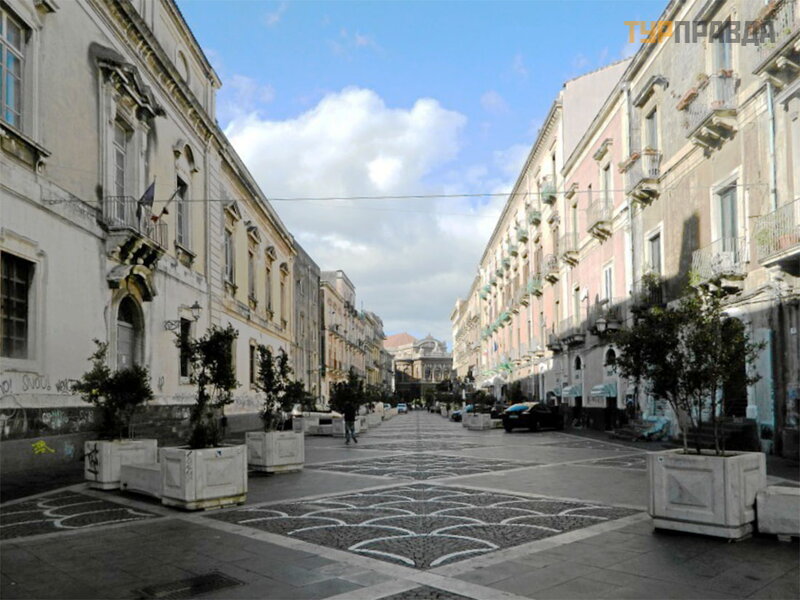
Biscari Palace in Sicily (Palazzo Biscari di Catania) is one of the most interesting architectural sights of the island. The palace is located near the Cathedral. This is a private castle, which still belongs to the descendants of the aristocratic Biscari family. It is far from always possible to get there, and there are no specific opening hours, although the building has a museum with a rich collection of archaeological antiquities. The tour is conducted by the owners of the palace themselves.
We were only able to enter the patio:
Then we decided that we had completed the program of visiting Catania, the inspection took even less time than we had originally planned, and at 18-00 we had already left for Giardini Naxos.
Continued here >>>
